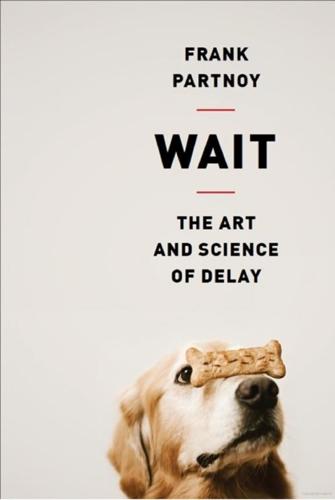
Wait: The Art and Science of Delay
by
Frank Partnoy
Published 15 Jan 2012
The original study is Walter Mischel, Ebbe B. Ebbesen, and Antonette Raskoff Zeiss, “Cognitive and Attentional Mechanisms in Delay of Gratification,” Journal of Personality and Social Psychology 21(1972): 204–218. Subsequent studies include: Harriet Nerlove Mischel and Walter Mischel, “The Development of Children’s Knowledge of Self-Control Strategies,” Child Development 54(1983): 603–619; Walter Mischel, Yuichi Shoda, and Philip K. Peake, “The Nature of Adolescent Competencies Predicted by Preschool Delay of Gratification,” Journal of Personality and Social Psychology 54(1988): 687–699; Walter Mischel, Yuichi Shoda, and Monica L.
…
For example, research on the importance of willpower does not draw from studies that show how heart rate variability matters to our ability to regulate our emotions (a topic we will explore in Chapter 1). In 2010, Walter Mischel and his coauthors suggested that the Bing Nursery experiments and studies of willpower (including brain imaging) are converging on an explanation of self-control that focuses on cognitive and neural mechanisms; they do not mention heart rate variability. See Walter Mischel et al., “‘Willpower’ over the Life Span: Decomposing Self-Regulation,” Social Cognitive and Affective Neuroscience Advance Access (September 19, 2010): 1–5.
…
Peake, “The Nature of Adolescent Competencies Predicted by Preschool Delay of Gratification,” Journal of Personality and Social Psychology 54(1988): 687–699; Walter Mischel, Yuichi Shoda, and Monica L. Rodriguez, “Delay of Gratification in Children,” Science 244(1989): 933–938; and Walter Mischel and Ozlem Ayduk, “Willpower in a Cognitive-Affective Processing System: The Dynamics of Delay of Gratification,” in Roy F. Baumeister and Kathleen D. Vohs, eds., Handbook of Self-Regulation: Research, Theory, and Applications, pp. 99–129 (Guilford, 2004). 24. Yuichi Shoda, Walter Mischel, and Philip K. Peake, “Predicting Adolescent Cognitive and Self-Regulatory Competencies from Preschool Delay of Gratification: Identifying Diagnostic Conditions,” Developmental Psychology 26(6, 1990): 978–986; John Mordecai Gottman and Lynn Fainsilber Katz, “Children’s Emotional Reactions to Stressful Parent-Child Interactions: The Link Between Emotional Regulation and Vagal Tone,” in Richard A.
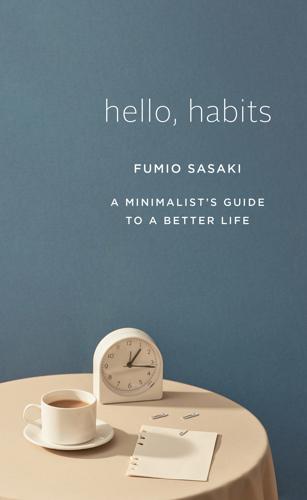
Hello, Habits
by
Fumio Sasaki
Published 6 Nov 2020
They’re the ones with the “strong willpower” who can maintain good habits and make efforts to achieve their objectives. What’s the difference between people who give in to the rewards in front of them and those who can wait for rewards in the future? An answer lies in the famous “marshmallow test” conducted by psychologist Walter Mischel concerning this issue. I would like you to pay attention to this marshmallow test, as it will be one of the central themes in this book. This test was conducted on children aged four to five at Stanford University’s Bing Nursery School during the 1960s. First, children chose what they wanted to eat the most from among snacks like marshmallows, cookies, and pretzels.
…
Corresponds to the limbic system, the striatum, and the amygdala: the “old brain.” 2.Rational. The response speed is slower, and it won’t work unless there’s an awareness of something. A system that enables thinking, the imagination, and planning. Corresponds to the frontal lobe, or the “new brain.” While there are various names for these two systems, I would like to follow Walter Mischel from the marshmallow test and call them the following: (1) the “hot system” and (2) the “cool system” It’s a little complicated, but I think it’s easy to understand if you can envision the following types of images: 1.The hot system is hot because you’re driven by your emotions or desires (“Yay!
…
But it can be controlled by our “cognition” or our “conscious mind,” which is handled by our cool system. Cognition is to see reality not exactly as it stands, but to look at it in a somewhat different way. “Maybe there was a pregnant woman in the car who had suddenly started having labor pains, and so they were rushing her to the hospital.” You can appease your anger when you think like that. Walter Mischel called this “cooling” the hot system. That’s what it means for the cool system and the hot system to interact. Is willpower a talent that we’re born with? It’s my second question that most concerns me with regard to the marshmallow test. Seeing as everything from a person’s performance in school to his or her state of health could be predicted by the test results, the question is whether willpower is really determined by the age of four or five.
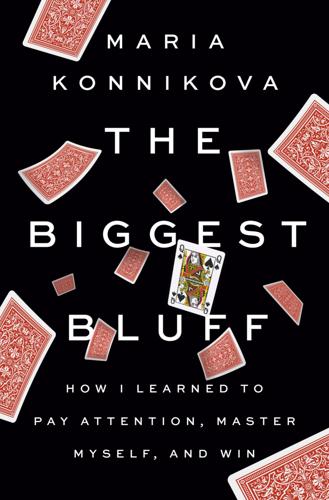
The Biggest Bluff: How I Learned to Pay Attention, Master Myself, and Win
by
Maria Konnikova
Published 22 Jun 2020
Classification: LCC GV1250.2.K66 A3 2020 (print) | LCC GV1250.2.K66 (ebook) | DDC 795.412—dc23 LC record available at https://lccn.loc.gov/2020002627 LC ebook record available at https://lccn.loc.gov/2020002628 Jacket images: (Queen of Spades) Getty Images Plus; (card pattern) Mercurio / Shutterstock pid_prh_5.5.0_c0_r0 In memory of Walter Mischel. I still haven’t published my dissertation, as I promised you I would, but at least there is this. May we always have the clarity to know what we can control and what we can’t. And to my family, for being there no matter what. Пусть все будут здоровы. “Life’s single lesson: that there is more accident to it than a man can ever admit to in a lifetime and stay sane.”
…
Each of these requires a certain amount of statistical calculation. How well I’ll fare there is another story. “You know, psychology really is the most fascinating part of the game,” Erik says, interrupting my thought process. “What specifically about decision making did you study? Like Kahneman?” “Actually, my graduate adviser was Walter Mischel—you know, the marshmallow guy?” “Oh wow. That’s exciting. Self-control is huge in the game.” So Mr. Seidel knows the marshmallow guy, too. I seem to have picked well. “I figured it might be,” I reply. “I mean, I’ve obviously never played. But here’s what I can tell you: I’m willing to bet I’ve read more about all of this than anyone else at the poker table.
…
What did I choose to study? Social psychology. Ah, but neuroscience is having a moment. I may have followed my interest, but not the job market. With whom did I study? Good luck to me getting a job in any psychology department where the Big Five personality traits are still big—I studied with Walter Mischel, and he and the Big Five are not on speaking terms. What about academic publications? Who might get assigned to review my manuscript—someone with a sympathetic ear or someone who thought my research was so much hogwash? I’m not going to get kicked out of a poker tournament for choosing a style of play that goes counter to the strategy of the bigwigs of the day and may challenge their ascendance.
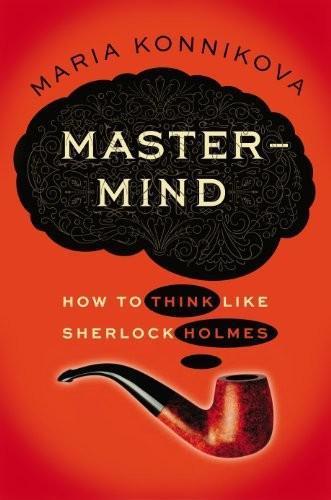
Mastermind: How to Think Like Sherlock Holmes
by
Maria Konnikova
Published 3 Jan 2013
“Should you care to add the case to your annals, my dear Watson, it can only be as an example of that temporary eclipse to which even the best-balanced mind may be exposed.” from His Last Bow, “The Disappearance of Lady Frances Carfax,” p. 342. “I am inclined to think—.” from The Valley of Fear, Part One, chapter 1: The Warning, p. 5. Postlude Walter Mischel was nine years old when he started kindergarten. It wasn’t that his parents had been negligent in his schooling. It was just that the boy couldn’t speak English. It was 1940 and the Mischels had just arrived in Brooklyn. They’d been one of the few Jewish families lucky enough to escape Vienna in the wake of the Nazi takeover in the spring of 1938.
…
Her seat: number one. She had scored highest of all her classmates. And yet, something wasn’t quite right. She knew that all it would take was another test to make her less smart. And could it be that it was so simple as all that—a score, and then your intelligence was marked for good? Years later, Walter Mischel and Carol Dweck both found themselves on the faculty of Columbia University. (As of this writing, Mischel is still there and Dweck has moved to Stanford.) Both had become key players in social and personality psychology research (though Mischel the sixteen-years-senior one), and both credit that early test to their subsequent career trajectories, their desire to conduct research into such supposedly fixed things as personality traits and intelligence, things that could be measured with a simple test and, in that measurement, determine your future.
…
By declaring himself at his wit’s end, by labeling something as beyond human power, he has closed his mind to the possibility of success. And that mindset, as it turns out, is precisely what matters most—and it’s a thing far more intangible and unmeasurable than a number on a test. For many years, Carol Dweck has been researching exactly what it is that separates Holmes’s “tut, tut” from Watson’s “wit’s end,” Walter Mischel’s success from his supposed IQ. Her research has been guided by two main assumptions: IQ cannot be the only way to measure intelligence, and there might be more to that very concept of intelligence than meets the eye. According to Dweck, there are two main theories of intelligence: incremental and entity.

Daughter Detox: Recovering From an Unloving Mother and Reclaiming Your Life
by
Peg Streep
Published 14 May 2017
The prefrontal cortex is the home of executive function, and it’s the latter that provides the brakes—what we usually call self-control or willpower—for the impulse. It will not surprise you that there’s evidence that our childhood experiences—specifically those connected to our mothers—also affect our self-control. To eat the marshmallow or not? That was the dilemma posed by Walter Mischel and his colleagues to a large group of four-year-olds over 50 years ago at Stanford University in an experiment so famous that it’s now known simply as the “Marshmallow Test.” Each child was seated at a desk; there was a single marshmallow on a plate and, beside it, a bell. The researcher then told the child she had to leave and the child was free to eat the marshmallow and ring the bell.
…
TURN DOWN THE HEAT: DEALING WITH REJECTION SENSITIVITY One of the best discussions of rejection sensitivity I’ve read describes it as “hot” reactivity, which is completely emotionally fueled. (Yes, this is the same terminology used in the discussion on how to reframe memories using cool processing.) Ozlem Ayduk and a team that included Walter Mischel (who ran the famous delayed gratification “Marshmallow Test” described on page 103 ) wanted to know if children who had successfully been able to delay gratification would actually be more skilled at managing rejection sensitivity. You may remember that the children who managed to resist the marshmallow did so by distracting themselves—looking away, singing, staring into the distance, whatever worked.
…
A special shout-out to Joe for unveiling the mysteries of self-publishing and for glittering and stimulating conversations. Finally, last but not least, a merci beaucoup to the best daughter in the world. You know who you are. Thank you for changing my life. R EFERENCES Introduction Kross, Ethan, Ozlem Ayduk, and Walter Mischel. When Asking “Why” Does Not Hurt: Distinguishing Rumination from Reflective Processing of Negative Emotions. Psychological Science , 2005, vol. 16(9), pp. 709-715. Pennebaker, James W., and Janel D. Segal. Forming a Story: The Health Benefits of Narrative. Journal of Clinical Psychology , 1999, vol. 55(10), pp. 1243-1254. 1.

Dopamine Nation: Finding Balance in the Age of Indulgence
by
Anna Lembke
Published 24 Aug 2021
* * * — Some people need neither shaman nor psychiatrist to imbue their drug of choice with the sacred. In a now famous Stanford marshmallow experiment, at least one child in the experiment managed the sacred entirely on their own. The Stanford marshmallow experiment was a series of studies led by psychologist Walter Mischel in the late 1960s at Stanford University to study delayed gratification. Children between the ages of three and six were offered a choice between one small reward provided immediately (a marshmallow) or two small rewards (two marshmallows) if the child could wait for approximately fifteen minutes without eating the first marshmallow.
…
lang=eng. 3,000 new gluten-free snack products: M. Shahbandeh, “Gluten-Free Food Market Value in the United States from 2014 to 2025,” Statista, November 20, 2019, accessed July 2, 2020, https://www.statista.com/statistics/884086/us-gluten-free-food-market-value/. famous Stanford marshmallow experiment: Yuichi Shoda, Walter Mischel, and Philip K. Peake, “Predicting Adolescent Cognitive and Self-Regulatory Competencies from Preschool Delay of Gratification: Identifying Diagnostic Conditions,” Developmental Psychology 26, no. 6 (1990): 978–86, https://doi.org/10.1037/0012-1649.26.6.978. “cover their eyes with their hands”: Roy F.
…
Statista, November 20, 2019. Accessed July 2, 2020. https://www.statista.com/statistics/884086/us-gluten-free-food-market-value/. Sherwin, C. M. “Voluntary Wheel Running: A Review and Novel Interpretation.” Animal Behaviour 56, no. 1 (1998): 11–27. https://doi.org/10.1006/anbe.1998.0836. Shoda, Yuichi, Walter Mischel, and Philip K. Peake. “Predicting Adolescent Cognitive and Self-Regulatory Competencies from Preschool Delay of Gratification: Identifying Diagnostic Conditions.” Developmental Psychology 26, no. 6 (1990): 978–86. https://doi.org/10.1037/0012-1649.26.6.978. Sinclair, J. D. “Evidence about the Use of Naltrexone and for Different Ways of Using It in the Treatment of Alcoholism.”
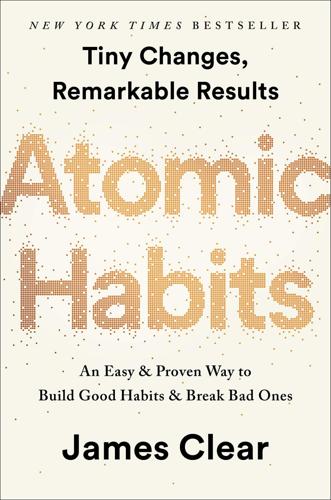
Atomic Habits: An Easy & Proven Way to Build Good Habits & Break Bad Ones
by
James Clear
Published 15 Oct 2018
For more, see Daniel Goldstein, “The Battle between Your Present and Future Self,” TEDSalon NY2011, November 2011, video, https://www.ted.com/talks/daniel_goldstein_the_battle_between_your_present_and_future_self. People who are better at delaying gratification have higher SAT scores: Walter Mischel, Ebbe B. Ebbesen, and Antonette Raskoff Zeiss, “Cognitive and Attentional Mechanisms in Delay of Gratification,” Journal of Personality and Social Psychology 21, no. 2 (1972), doi:10.1037/h0032198; W. Mischel, Y. Shoda, and M. Rodriguez, “Delay of Gratification in Children,” Science 244, no. 4907 (1989), doi:10.1126/science.2658056; Walter Mischel, Yuichi Shoda, and Philip K. Peake, “The Nature of Adolescent Competencies Predicted by Preschool Delay of Gratification,” Journal of Personality and Social Psychology 54, no. 4 (1988), doi:10.1037//0022–3514.54.4.687; Yuichi Shoda, Walter Mischel, and Philip K.
…
Peake, “The Nature of Adolescent Competencies Predicted by Preschool Delay of Gratification,” Journal of Personality and Social Psychology 54, no. 4 (1988), doi:10.1037//0022–3514.54.4.687; Yuichi Shoda, Walter Mischel, and Philip K. Peake, “Predicting Adolescent Cognitive and Self-Regulatory Competencies from Preschool Delay of Gratification: Identifying Diagnostic Conditions,” Developmental Psychology 26, no. 6 (1990), doi:10.1037//0012–1649.26.6.978. CHAPTER 16 “I would start with 120 paper clips in one jar”: Trent Dyrsmid, email to author, April 1, 2015. Benjamin Franklin: Benjamin Franklin and Frank Woodworth Pine, Autobiography of Benjamin Franklin (New York: Holt, 1916), 148.
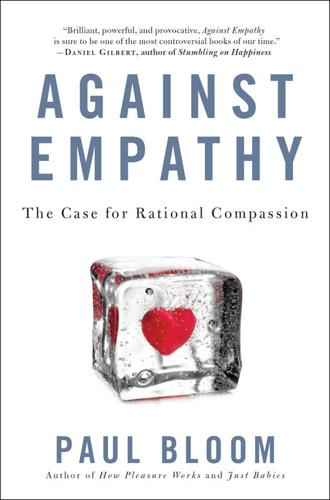
Against Empathy: The Case for Rational Compassion
by
Paul Bloom
Hambrick and Christopher Chabris, “Yes, IQ Really Matters,” Slate, April 14, 2014, http://www.slate.com/articles/health_and_science/science/2014/04/what_do_sat_and_iq_tests_measure_gen eral_intelligence_predicts_school_and.html. 233 professional moral philosophers Eric Schwitzgebel and Joshua Rust, “The Moral Behavior of Ethics Professors: Relationships Among Self-Reported Behavior, Expressed Normative Attitude, and Directly Observed Behavior,” Philosophical Psychology 27 (2014): 293–327. 234 Walter Mischel investigated For a review, see Walter Mischel, The Marshmallow Test: Mastering Self-Control (Boston: Little, Brown, 2014). studies of exceptional altruists Abigail A. Marsh et al., “Neural and Cognitive Characteristics of Extraordinary Altruists,” Proceedings of the National Academy of Sciences 111 (2014): 15036–41.
…
But there’s something even better. Self-control can be seen as the purest embodiment of rationality in that it reflects the working of a brain system (embedded in the frontal lobe, the part of the brain that lies behind the forehead) that restrains our impulsive, irrational, or emotive desires. In a series of classic studies, Walter Mischel investigated whether children could refrain from eating one marshmallow now to get two later. He found that the children who waited for two marshmallows did better in school and on their SATs as adolescents and ended up with better mental health, relationship quality, and income as adults. We’ve seen from studies of psychopaths that violent criminal behavior is associated with low self-control; it’s interesting as well that studies of exceptional altruists, such as those who donate their kidneys to strangers, find that they have unusually high self-control.
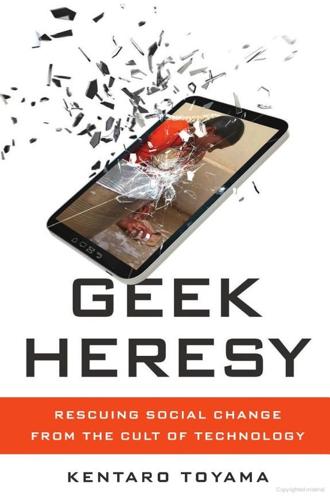
Geek Heresy: Rescuing Social Change From the Cult of Technology
by
Kentaro Toyama
Published 25 May 2015
I don’t blame David for his poor showing in geometry, or even for his lackluster heart, mind, and will. Nor should anyone else. His birth family might have been cursed with drug abuse, alcoholism, homelessness, illiteracy, insolvency, emotional turmoil, or just garden-variety bad luck or bad judgment. You can’t blame a child for not developing good study habits under constant distress. Yet Walter Mischel’s famous “marshmallow study” showed that the capacity to delay gratification – a kind of self-control – expressed at ages four to six is among the strongest predictors of achievement and social adjustment in young adults.2 It doesn’t make much sense to hold six-year-olds accountable for their personalities – it’s obviously not up to them.
…
“Practical wisdom” as defined by Schwartz and Sharpe (2010) is very close to the concept of discernment that I am defining in this chapter. 15.With regard to individuals, there is a rich line of research in the psychology of self-control (explored under various names, such as executive function, self-discipline, self-regulation, delay of gratification, and willpower), as well as in its pathological absence (such as akrasia, the breakdown of will, self-defeating behavior, and, in an extreme form, addiction). Academic experts sometimes make fine distinctions between these terms, but the concepts are closely related. Among those who champion the primacy of willpower are Walter Mischel, George Ainslie, and Roy Baumeister. Mischel is best known for his “marshmallow experiment” which demonstrated that young children who were able to delay gratification by giving up an immediate reward for a larger reward later grew up to be more successful in school and life than their peers who were not.
…
June 7, 2014, www.economist.com/news/science-and-technology/21603409-how-brazil-became-world-leader-reducing-environmental-degradation-cutting. Ehrenreich, Barbara. (2009). Bright-Sided: How the Relentless Promotion of Positive Thinking Has Undermined America. Metropolitan Books. Eigsti, Inge-Marie, Vivian Zayas, Walter Mischel, Yuichi Shoda, Ozlem Ayduk, Mamta B. Dadlani, Matthew C. Davidson, J. Lawrence Aber, and B. J. Casey. (2006). Predicting cognitive control from preschool to late adolescence and young adulthood. Psychological Science 17(6):478–484, http://pss.sagepub.com/content/17/6/478.abstract. Ellerman, David. (2005).

The Rise of Superman: Decoding the Science of Ultimate Human Performance
by
Steven Kotler
Published 4 Mar 2014
It’s factory athletics. It’s Kumon math tutoring, Baby Einstein, Suzuki violin, et al. But it’s also the world McConkey walked away from that naked day at Vail. He turned his back on the factory, yet somehow still went on to become Superman. Finally, the trouble with marshmallows. In 1972, Stanford psychologist Walter Mischel performed a fairly straightforward study in delayed gratification: he offered four-year-old children a marshmallow. Either the kids could eat it immediately or, if they waited for him to return from running a short errand, they would get two marshmallows as a reward. Most kids couldn’t wait. They ate the marshmallow the moment Mischel left the room.
…
.… The horrors and sheer ugliness of the past they have experienced become a permanent filter through which they view all their current experiences.” Zimbardo went on to become one of the most well-regarded psychologists of the twentieth century, author of more than fifty books, and past president of the American Psychological Association. He taught at both Yale and Stanford and was at the latter institution when Walter Mischel performed his famed marshmallow experiment. The results caught Zimbardo’s attention, but not because he was interested in delayed gratification. Rather, because they seemed to confirm his childhood suspicions about time. Zimbardo noticed two competing “time perspectives” at work in Mischel’s experiment.
…
As Bloom later told reporters: Ibid. 80 “A lot of us were from broken homes”: John Roos, “Skateboarding, Punk Inspire a Hunn’s Salvation,” LA Times, December 5, 2000. Anders Ericsson performed: Ericsson et al., Cambridge Handbook of Expertise and Expert Performance, and Malcolm Gladwell, Outliers: The Story of Success (Little, Brown, 2008), pp. 35–68. “They work much, much harder”: Gladwell, Outliers, p. 39. 81 Walter Mischel performed: Philip Zimbardo and John Boyd, The Time Paradox: The New Psychology of Time That Will Change Your Life (Free Press, 2008), pp. 216–20. 82 Outside magazine profile of Shane McConkey: Tim Sohn, “The Life and Death of Shane McConkey,” Outside, June 2009. “From this experience”: This entire section is based on Zimbardo and Boyd’s The Time Paradox. 84 UCLA psychologist Steven Berglas: Steven Berglas, Reclaiming the Fire: How Successful People Overcome Burnout (Random House, 2001). 85 Psychologists describe flow as “autotelic”: Csikszentmihalyi, Creativity, p. 113.

Taming the To-Do List: How to Choose Your Best Work Every Day
by
Glynnis Whitwer
Published 10 Aug 2015
For a procrastinator, willpower is elusive, showing up at unexpected times and being MIA when we need it most. Are some people born with more willpower? Researchers believe that some people are born with a stronger sense of willpower than others. In the famous “Marshmallow Test” conducted by Walter Mischel and Ebbe B. Ebbesen at Stanford University in 1970, researchers studied how children responded when offered a treat. The children were set in a room with a treat of some kind, often a marshmallow, and told if they waited to eat it, they could have a second treat. Out of the over six hundred children who took the test, one-third delayed gratification long enough to get a second treat.[2] The promise of a second marshmallow wasn’t enough to deter the other two-thirds from immediately enjoying the single treat.
…
Gossip? Idleness? Gluttony? Take some time to research verses on these topics, write them down, and memorize them. Then when temptation strikes, you’ll be ready. Creating a Mental Image Another tool to strengthen your willpower is to create an unpleasant association with what you want to avoid. Walter Mischel, the founder of the original marshmallow test, continued to study the idea of willpower and those who seemed to have more of it. As Mischel interviewed the test’s children throughout the years, he learned that a consistent and crucial factor in delaying gratification involves changing your perception of the object you want to resist.
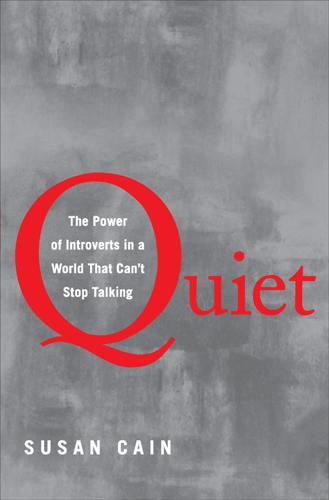
Quiet: The Power of Introverts in a World That Can't Stop Talking
by
Susan Cain
Published 24 Jan 2012
Meet Professor Brian Little: The stories about Brian Little throughout this chapter come from numerous telephone and e-mail interviews with the author between 2006 and 2010. 2. Hippocrates, Milton, Schopenhauer, Jung: Please see A Note on the Words Introvert and Extrovert for more on this point. 3. Walter Mischel: For an overview of the person-situation debate, see, for example, David C. Funder, The Personality Puzzle (New York: W. W. Norton, 2010), 118–44. See also Walter Mischel and Yuichi Shoda, “Reconciling Processing Dynamics and Personality Dispositions,” Annual Review of Psychology 49 (1998): 229–58. In further support of the premise that there truly is such a thing as a fixed personality: We know now that people who score as introverts on personality tests tend to have different physiologies and probably inherit some different genes from those who measure as extroverts.
…
Situationism posits that our generalizations about people, including the words we use to describe one another—shy, aggressive, conscientious, agreeable—are misleading. There is no core self; there are only the various selves of Situations X, Y, and Z. The Situationist view rose to prominence in 1968 when the psychologist Walter Mischel published Personality and Assessment, challenging the idea of fixed personality traits. Mischel argued that situational factors predict the behavior of people like Brian Little much better than supposed personality traits. For the next few decades, Situationism prevailed. The postmodern view of self that emerged around this time, influenced by theorists like Erving Goffman, author of The Presentation of Self in Everyday Life, suggested that social life is performance and social masks are our true selves.
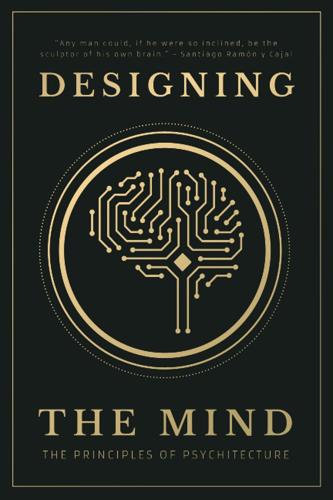
Designing the Mind: The Principles of Psychitecture
by
Designing The Mind
and
Ryan A Bush
Published 10 Jan 2021
Just as we established in the emotional section, our external experiences are generally filtered through our thoughts before they trigger behaviors. This means our thoughts and focus play a powerful role in the actions we take. Most people are familiar with the marshmallow test - Stanford psychologist Walter Mischel’s classic experiment which linked self-control and delayed gratification to nearly every important metric of the good life. It asked children to resist the urge to eat a marshmallow for as long as they could. They did not have the option of changing their environment because they were asked to sit right in front of the marshmallow.
…
Fowler, “The Spread of Obesity in a Large Social Network over 32 Years,” New England Journal of Medicine 357, no. 4 (July 26, 2007): 370–79, https://doi.org/10.1056/NEJMsa066082. M. J. Howes, J. E. Hokanson, and D. A. Loewenstein, “Induction of Depressive Affect after Prolonged Exposure to a Mildly Depressed Individual,” Journal of Personality and Social Psychology 49, no. 4 (October 1985): 1110–13, https://doi.org/10.1037//0022-3514.49.4.1110. Walter Mischel and Nancy Baker, “Cognitive Appraisals and Transformations in Delay Behavior,” Journal of Personality and Social Psychology 31, no. 2 (1975): 254–61, https://doi.org/10.1037/h0076272. Monique Boekaerts, Paul R. Pintrich, and Moshe Zeidner, eds., Handbook of Self-Regulation. Chapter 15: Attentional Control and Self-Regulation, n.d.
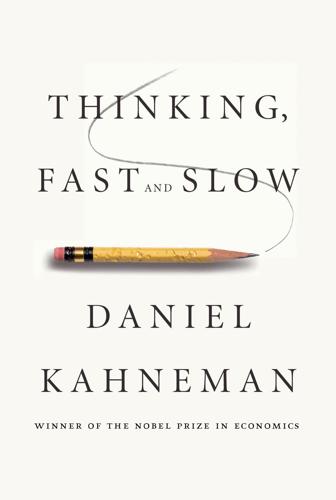
Thinking, Fast and Slow
by
Daniel Kahneman
Published 24 Oct 2011
Stanovich, Rationality and the Reflective Mind (New York: Oxford University Press, 2011). cruel dilemma: Walter Mischel and Ebbe B. Ebbesen, “Attention in Delay of Gratification,” Journal of Personality and Social Psychology 16 (1970): 329–37. “There were no toys…distress”: Inge-Marie Eigsti et al., “Predicting Cognitive Control from Preschool to Late Adolescence and Young Adulthood,” Psychological Science 17 (2006): 478–84. higher scores on tests of intelligence: Mischel and Ebbesen, “Attention in Delay of Gratification.” Walter Mischel, “Processes in Delay of Gratification,” in Advances in Experimental Social Psychology, Vol. 7, ed.
…
Intelligence, Control, Rationality Researchers have applied diverse methods to examine the connection between thinking and self-control. Some have addressed it by asking the correlation question: If people were ranked by their self-control and by their cognitive aptitude, would individuals have similar positions in the two rankings? In one of the most famous experiments in the history of psychology, Walter Mischel and his students exposed four-year-old children to a cruel dilemma. They were given a choice between a small reward (one Oreo), which they could have at any time, or a larger reward (two cookies) for which they had to wait 15 minutes under difficult conditions. They were to remain alone in a room, facing a desk with two objects: a single cookie and a bell that the child could ring at any time to call in the experimenter and receiven oand recei the one cookie.
…
Walter Mischel, “Processes in Delay of Gratification,” in Advances in Experimental Social Psychology, Vol. 7, ed. Leonard Berkowitz (San Diego, CA: Academic Press, 1974), 249–92. Walter Mischel, Yuichi Shoda, and Monica L. Rodriguez, “Delay of Gratification in Children,” Science 244 (1989): 933–38. Eigsti, “Predicting Cognitive Control from Preschool to Late Adolescence.” improvement was maintained: M. Rosario Rued { Rocenca et al., “Training, Maturation, and Genetic Influences on the Development of Executive Attention,” PNAS 102 (2005): 14931–36. conventional measures of intelligence: Maggie E. Toplak, Richard F. West, and Keith E. Stanovich, “The Cognitive Reflection Test as a Predictor of Performance on Heuristics-and-Biases Tasks,” Memory & Cognition (in press). 4: The Associative Machine Associative Machine: Carey K.

Misbehaving: The Making of Behavioral Economics
by
Richard H. Thaler
Published 10 May 2015
I turned to psychology for inspiration. Surely, I thought, there would be a vast literature in psychology on delay of gratification. Dead wrong. Although many psychologists are now interested in self-control problems, in the late 1970s that was not the case. But I did unearth two treasures. The first was the work of Walter Mischel, which is now quite well known. Mischel, then at Stanford, was running experiments at a day care center on the school’s campus. A kid (age four or five) was asked into a room by the experimenter and given a choice between a small reward now and a larger reward a bit later. The rewards were treats such as marshmallows or Oreo cookies.
…
We invited three groups of people: distinguished psychologists who were willing to endure a day spent talking to economists, some senior economists who were known to have an open mind about new approaches to doing economics, and the few hard-core folks who were engaged in doing research. Eric is a persuasive guy, and as a result of his charm and arm-twisting, the collection of psychologists who showed up at our initial meeting was truly astonishing. We had not just Amos and Danny, but also Walter Mischel, of the Oreo and marshmallow experiment fame, Leon Festinger, who formulated the idea of cognitive dissonance, and Stanley Schachter, one of the pioneers of the study of emotions. Together they were the psychology version of the dream team. Some of the friendly economists who agreed to participate were also an all-star cast: George Akerlof, William Baumol, Tom Schelling, and Richard Zeckhauser.
…
So, if we could figure out a way that employees would not feel any cuts to their paychecks, there would be less resistance to saving more. The third behavioral insight was related to self-control. A key finding from the research on this topic is that we have more self-control when it comes to the future than the present. Even the kids in Walter Mischel’s marshmallow experiments would have no trouble if today they were given the choice between one marshmallow at 2 p.m. tomorrow or three marshmallows at 2:15 p.m. tomorrow. Yet, we know that if we give them that same choice tomorrow at 2 p.m., few would be able to wait until 2:15. They are present-biased.
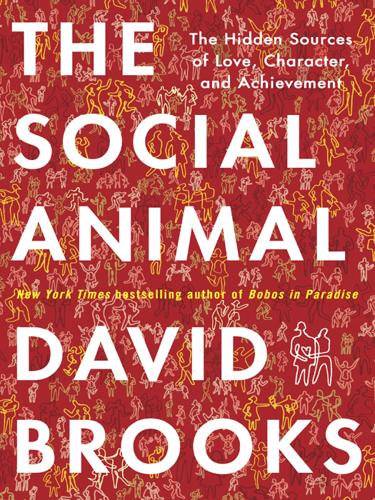
The Social Animal: The Hidden Sources of Love, Character, and Achievement
by
David Brooks
Published 8 Mar 2011
“It feels like it wasn’t even me,” Erica told her mother during one of their conversations about the event. “It was like it was some strange angry person who had hijacked my body. I don’t understand where this person came from or what she was thinking. I’m afraid she’s going to come back again and do something terrible.” The Famous Marshmallow Around 1970 Walter Mischel, then at Stanford and now at Columbia, launched one of the most famous and delightful experiments in modern psychology. He sat a series of four-year-olds in a room and put a marshmallow on the table. He told them they could eat the marshmallow right away, but that he was going to go away and if they waited until he returned he would give them two marshmallows.
…
I have also incurred debts to many people who helped me with substance and style. Jesse Graham of the University of Southern California policed the book for scientific errors. His wife, Sarah Graham, provided a sensitive literary reading. The psychologist Mindy Greenstein, author of The House on Crash Corner, read most of the manuscript, and Walter Mischel of Columbia read a part. Both offered crucial suggestions. Cheryl Miller, formerly of The New York Times and now of the American Enterprise Institute, did a superlative job of research, copyediting, and fact checking. Her intelligence and competence are legendary among those who have been fortunate enough to work with her.
…
Seligman, “Self-Discipline Outdoes IQ in Predicting Academic Performance of Adolescents,” Psychological Science 16, no. 12 (2005): 939–44, http://www.citeulike.org/user/kericson/article/408060. 8 The marshmallow test turned Jonah Lehrer, How We Decide (New York: Houghton Mifflin Co., 2009), 112. 9 The kids who possessed Jonah Lehrer, “Don’t! The Secret of Self-Control,” The New Yorker, May 18, 2009, http://www.newyorker.com/reporting/2009/05/18/090518fa_fact_lehrer?currentPage=all. 10 These children could wait Walter Mischel and Ozlem Ayduk, “Willpower in a Cognitive-Affective Processing System: The Dynamics of Delay of Gratification,” in Handbook of Self-Regulation: Research, Theory, and Applications, eds. Roy F. Baumeister and Kathleen D. Vohs (New York: Guilford Press, 2004), 113. 11 a 2001 survey Douglas Kirby, “Understanding What Works and What Doesn’t in Reducing Adolescent Sexual Risk-Taking,” Family Planning Perspectives 33, no. 6 (November/December 2001): http://www.guttmacher.org/pubs/journals/3327601.html. 12 It’s very hard to build Clive Thompson, “Are Your Friends Making You Fat?”
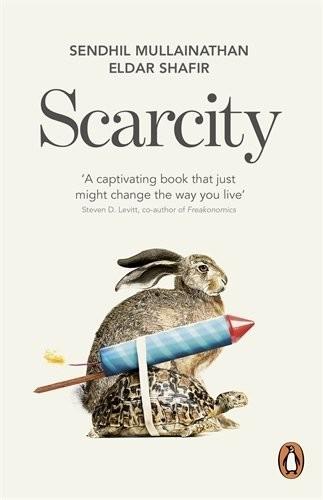
Scarcity: The True Cost of Not Having Enough
by
Sendhil Mullainathan
Published 3 Sep 2014
Just like the processor that is slowed down by too many applications, the poor here appear worse because some of their bandwidth is being used elsewhere. EXECUTIVE CONTROL The second component of bandwidth is executive control. As discussed above, executive control is multifaceted, so we begin by considering one of the many important functions to which it contributes, namely, self-control. In the late 1960s Walter Mischel and his colleagues performed one of the most interesting (at the very least, the cutest) psychology experiments on impulsivity. Mischel’s research staff would seat a four- or five-year-old in a room and put a marshmallow in front of him. Some children would stare entranced at it, some would fidget with excitement; all of them wanted it.
…
Kerkhof and Hans Van Dongen, Human Sleep and Cognition: Basic Research 185 (Amsterdam: Elsevier Science, 2010). about five IQ points: “What Is a Genius IQ Score?” About.com Psychology, retrieved October 23, 2012, from http://psychology.about.com/od/psychologicaltesting/f/genius-iq-score.htm. Walter Mischel and his colleagues: W. Mischel, E. B. Ebbesen, and A. Raskoff Zeiss, “Cognitive and Attentional Mechanisms in Delay of Gratification,” Journal of Personality and Social Psychology 21, no. 2 (1972): 204. In follow-up studies years later, Mischel and colleagues found a remarkable predictability of cognitive and social competencies in their now grown subjects, which has enriched researchers’ thinking about the role of individual versus situational determinants of behavior; W.
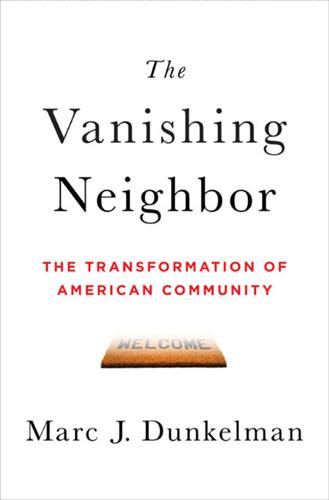
The Vanishing Neighbor: The Transformation of American Community
by
Marc J. Dunkelman
Published 3 Aug 2014
Fortunately—at least for those who believe that good things happen when people with disparate worldviews get to know one another—the answer to that question is yes. Beyond the sorts of institutional reforms suggested in the last chapter, there’s a strategy available that might well induce future generations to rebuild the bridges that have disappeared. During the 1960s, Walter Mischel, a psychology professor then on the faculty at Stanford, conceived of a revolutionary experiment designed to measure an individual’s capacity for self-control.1 Conducting what is now known as the “marshmallow test,” he placed a four-year-old and a researcher in a room with an edible treat set on a plate between them.
…
One study that disaggregated thirty-two separate personality variables—self-esteem and energy level among them—determined that, in the end, self-discipline was the most accurate in predicting college GPA.12 Others argued that self-discipline is twice as powerful as IQ in predicting an eighth-grade student’s grades.13 As explained by Paul Tough, the New York Times Magazine and New Yorker writer who has become a beacon for this whole field of research, the factor that now appears to be the most powerful determinant of an individual’s success is his or her ability to control impulses, stay focused, avoid distractions, manage emotions, and control thoughts. “Psychologists call them personality traits, [but] the rest of us sometimes think of them as character.”14 Inspired broadly by Walter Mischel’s earlier work on the marshmallow test and keyed generally to the concern that contemporary American education fails students too frequently, a field of research has more recently emerged to explore the causes and effects of self-control. Frequently tied to the mission many educators have to break the cycle of urban poverty, a small coterie of scholars has tried to answer the question whether impulse control might explain why certain individuals are able to escape the traps of dysfunction while others are not.

The Third Pillar: How Markets and the State Leave the Community Behind
by
Raghuram Rajan
Published 26 Feb 2019
See Betty Hart and Todd Risley, Meaningful Differences in the Everyday Experience of Young American Children (Baltimore: Brookes Publishing, 1995), cited in Richard Reeves, Dream Hoarders: How the American Upper Middle Class Is Leaving Everyone Else in the Dust, Why That Is a Problem, and What to Do About It (Washington, D.C.: Brookings Institution Press, 2017), 42. 14. Walter Mischel, Yuichi Shoda, and Monica I. Rodriguez, “Delay of Gratification in Children,” Science 244, no. 4907 (1989): 933–38; Walter Mischel, Yuichi Shoda, and Philip K. Peake, “The Nature of Adolescent Competencies Predicted by Preschool Delay of Gratification,” Journal of Personality and Social Psychology 54, no. 4 (1988): 687–96; Jacoba Urist, “What the Marshmallow Test Really Teaches About Self-Control,” The Atlantic, September 24, 2014, https://www.theatlantic.com/health/archive/2014/09/what-the-marshmallow-test-really-teaches-about-self-control/380673/. 15.
…
For instance, one study finds that children of professional families hear more spoken words—about 2,100 per hour—compared to 1,200 per hour in working-class families and 600 per hour in families on welfare.13 This means the child in a professional family typically hears millions more words every year than a child in a family on welfare, which naturally boosts both the child’s vocabulary and its ability to speak relative to its peers. The famous Stanford marshmallow test and follow-up studies suggest that professional families give their children more than just learning—they give them trust and self-control. In the early 1960s, Walter Mischel and his graduate students gave little children from Stanford University’s Bing Nursery School the choice between eating a marshmallow immediately, or waiting and getting a second marshmallow after fifteen minutes or so if they could hold out. Videos of the torments children go through as they stare at the marshmallow have been an enormous source of entertainment for adults, but Mischel found something more.
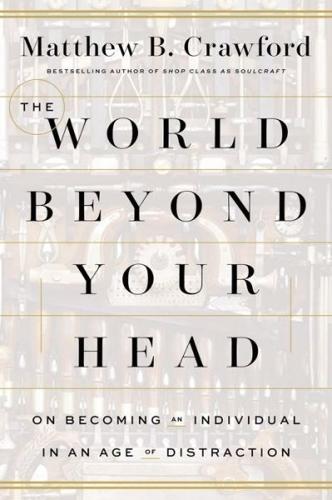
The World Beyond Your Head: On Becoming an Individual in an Age of Distraction
by
Matthew B. Crawford
Published 29 Mar 2015
It requires, if not ruthlessness toward oneself, a capacity for self-regulation. And reciprocally, the ability to control oneself in the face of some temptation is greatly enhanced by, indeed seems simply to be, the ability to direct one’s attention toward something else. In a classic psychology experiment, Walter Mischel and E. B. Ebbesen gave children the option of having one marshmallow immediately or, if they were able to wait fifteen minutes, two marshmallows.10 Left alone with the marshmallow at hand, some broke down and gobbled it immediately, others after a brief struggle. But about a third of the children succeeded in deferring gratification and getting the bigger payoff.
…
Inattentional Blindness While Walking and Talking on a Cell Phone,” Applied Cognitive Psychology 24, no. 5 (July 2010): 597–607. 9. Frank A. Drews, Monisha Pasupathi, and David L. Strayer, “Passenger and Cell Phone Conversations in Simulated Driving,” Journal of Experimental Psychology: Applied 14, no. 4 (2008). 10. Walter Mischel and E. B. Ebbesen, “Attention in Delay of Gratification,” Journal of Personality and Social Psychology 16 (October 1970). 11. See The End of Overeating (New York: Rodale Press, 2009), by David Kessler, former commissioner of the U.S. Food and Drug Administration. 12. Arthur M. Glenberg, “What Memory Is For,” Behavioral and Brain Sciences 20 (1997): 10. 13.
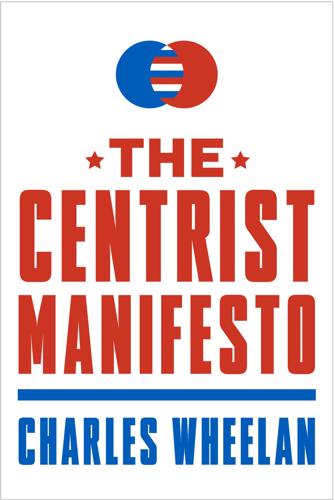
The Centrist Manifesto
by
Charles Wheelan
Published 18 Apr 2013
Blow, “The G.O.P.’s Abandoned Babies,” New York Times, February 26, 2011. 8 Peter G. Peterson Foundation, “The U.S. Spent More on Defense in 2011 Than Did the Countries with the Next 13 Highest Defense Budgets Combined,” April 12, 2012, http://www.pgpf.org/Chart-Archive/0053_defense-comparison.aspx. 9 Yuichi Shoda, Walter Mischel, and Philip K. Peake, “Predicting Adolescent Cognitive and Self-Regulatory Competencies from Preschool Delay of Gratification: Identifying Diagnostic Conditions,” Developmental Psychology, vol. 26, no. 6, 1990. 10 Mackenzie Weinger, “Poll: 73 Percent of Americans Say Country Headed in Wrong Direction,” Politico, August 10, 2011, http://www.politico.com/news/stories/0811/61031.html. 11 “New Low: Just 14% Think Today’s Children Will Be Better Off Than Their Parents,” Rasmussen Reports, July 29, 2012, http://www.rasmussenreports.com/public_content/business/jobs_employment/july_2012/new_low_just_14_think_today_s_children_will_be_better_off_than_their_parents. 12 Matea Gold, “2012 Campaign Set to Cost a Record $6 Billion,” Los Angeles Times, October 31, 2012. 13 Thomas Friedman, “Third Party Rising,” New York Times, November 3, 2010. 14 David Brooks, “Pundit under Protest,” New York Times, June 13, 2011. 15 Olympia Snowe, “Olympia Snowe: Why I’m Leaving the Senate,” Washington Post, March 1, 2012. 16 Monica Davey, “Lugar Loses Primary Challenge in Indiana,” New York Times, May 8, 2012. 17 Jennifer Steinhauer, “Weighing the Effect of an Exit of Centrists,” New York Times, October 8, 2012. 18 Alan Murray, “A Raging Moderate Finds Neither Party Is Interested in Him,” Wall Street Journal, March 2, 2004. 19 John P.
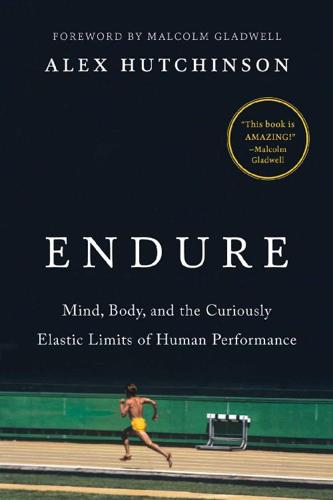
Endure: Mind, Body, and the Curiously Elastic Limits of Human Performance
by
Alex Hutchinson
Published 6 Feb 2018
As a result, much of the funding for Marcora’s research, from caffeine gum to “brain endurance training,” comes from Britain’s Ministry of Defence, who are interested in ways of fighting both mental and physical fatigue. Closely linked to the sustained attention required by adventure motorcyclists and soldiers is another cognitive process called “response inhibition”—the ability to consciously override your impulses. This is one of the skills that Stanford University psychologist Walter Mischel tested with his famous “marshmallow test” in the late 1960s. The experimenters offered preschoolers a choice between one treat right away, or two treats if they waited for fifteen minutes. Over decades of follow-up, the children who resisted temptation the longest ended up with better test scores, more education, and lower body-mass index.19 Other studies have linked low response inhibition to higher risk of outcomes like divorce and even crack cocaine addiction.
…
Blanchfield et al., “Talking Yourself Out of Exhaustion: The Effects of Self-Talk on Endurance Performance,” Medicine & Science in Sports & Exercise 46, no. 5 (2014). 18. caffeine pills: F. C. Wardenaar et al., “Nutritional Supplement Use by Dutch Elite and Sub-Elite Athletes: Does Receiving Dietary Counseling Make a Difference?,” International Journal of Sport Nutrition and Exercise Metabolism 2, no. 1 (2017). 19. his famous “marshmallow test”: Walter Mischel et al., “Delay of Gratification in Children,” Science 244, no. 4907 (1989); also B. J. Casey et al., “Behavioral and Neural Correlates of Delay of Gratification 40 Years Later,” PNAS 108, no. 36 (2011). 20. tax their subjects’ response inhibition: B. Pageaux et al., “Response Inhibition Impairs Subsequent Self-Paced Endurance Performance,” European Journal of Applied Physiology 114, no. 5 (2014). 21. professionals were significantly better at the Stroop task: K.
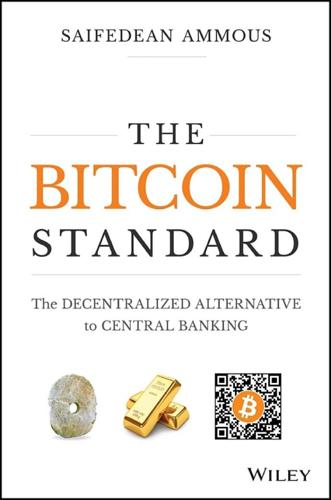
The Bitcoin Standard: The Decentralized Alternative to Central Banking
by
Saifedean Ammous
Published 23 Mar 2018
The difference, of course, is that Linda's descendants have vastly higher productivity than Harry's, and that's what makes engaging in the longer process worthwhile. An important demonstration of the importance of time preference comes from the famous Stanford marshmallow experiment,2 conducted in the late 1960s. Psychologist Walter Mischel would leave children in a room with a piece of marshmallow or a cookie, and tell the kids they were free to have it if they wanted, but that he will come back in 15 minutes, and if the children had not eaten the candy, he would offer them a second piece as a reward. In other words, the children had the choice between the immediate gratification of a piece of candy, or delaying gratification and receiving two pieces of candy.
…
Barzun's work has resonated with many of this generation because it contains a large degree of depressing truth: once one overcomes one's inherent bias to believe in the inevitability of progress, there is no escaping the conclusion that ours is a generation that is inferior to its ancestors in culture and refinement, in the same way the Roman subjects of Diocletian, living off his inflationary spending and drunk on the barbaric spectacles of the Colosseum, could not hold a candle to the great Romans of Caesar's era, who had to earn their aureus coins with sober hard work. Notes 1 Hans‐Hermann Hoppe, Democracy: The God That Failed, p. 6. 2 Walter Mischel, Ebbe B. Ebbesen, and Antonette Raskoff Zeiss, “Cognitive and Attentional Mechanisms in Delay of Gratification,” Journal of Personality and Social Psychology, vol. 21, no. 2 (1972): 204–218. 3 The reader is referred to the first chapter of Hoppe's Democracy: The God That Failed for an excellent discussion of these factors.
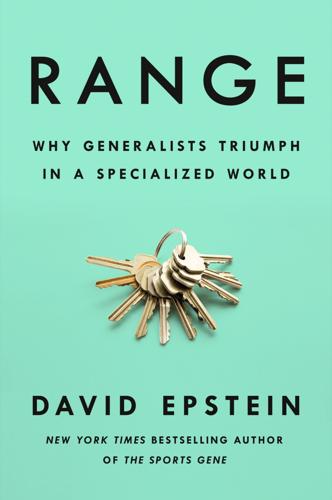
Range: Why Generalists Triumph in a Specialized World
by
David Epstein
Published 1 Mar 2019
The original premise was simple: An experimenter places a marshmallow (or a cookie, or a pretzel) in front of a nursery school child; before leaving, the experimenter tells the child that if she can wait until the experimenter returns, she’ll get that marshmallow plus a second one. If the child can’t wait, she can eat the marshmallow. The children were not told how long the wait would be (it was fifteen to twenty minutes, depending on age), so they just had to hold out if they wanted the maximum reward. Psychologist Walter Mischel and his research team followed up with the children years later, and found that the longer a child had been able to wait, the more likely she was to be successful socially, academically, and financially, and the less likely she was to abuse drugs. The marshmallow test was already a celebrity as scientific experiments go, but it became the Beyoncé of studies when media outlets and parents eager to foretell their child’s destiny started posting DIY marshmallow tests online.
…
Mroczek, “Personality Trait Change in Adulthood,” Current Directions in Psychological Science 17, no. 1 (2009): 31–35. For a nice (and free) review of personality research intended for a broad audience, see M. B. Donnellan, “Personality Stability and Change,” in Noba Textbook Series: Psychology, ed. R. Biswas-Diener and E. Diener (Champaign, IL: DEF Publishers, 2018), nobaproject.com. Psychologist Walter Mischel and his research team: W. Mischel, The Marshmallow Test (New York: Little, Brown, 2014 [Kindle ebook]). Shoda has repeatedly made a point: Shoda used the occasion of winning a research award to make the point again. A June 2, 2015, press release from the University of Washington announcing the award noted, “While pleased by the honor, Shoda expressed concern about media coverage of the study over the years, and the incorrect notion that parents could predict their children’s fate by doing the study themselves.”

The Undoing Project: A Friendship That Changed Our Minds
by
Michael Lewis
Published 6 Dec 2016
Harvard was home to some of the leading figures in the field, but Danny decided, without anyone’s help, that he wasn’t bright enough to go to Harvard—and didn’t bother to apply. Instead he went to Berkeley. When he returned to Hebrew University as a young assistant professor in 1961, after four years away, he was freshly inspired by personality studies being done by the psychologist Walter Mischel. In the early 1960s Mischel created these wonderfully simple tests on children that wound up revealing a lot about them. In what became known as the “marshmallow experiment,” Mischel put three-, four-, and five-year-old kids in a room alone with their favorite treat—a pretzel stick, a marshmallow—and told them that if they could last a few minutes without eating the treat they’d receive a second treat.
…
In some strange way Danny contained within himself his own opponent. He didn’t need another. Amos, to be Amos, needed opposition. Without it he had nothing to triumph over. And Amos, like his homeland, lived in a state of readiness for battle. “Amos didn’t have Danny’s feeling that we should all think together and work together,” said Walter Mischel, who had been the chair of Stanford’s Psychology Department when it hired Amos. “He thought, ‘Fuck You.’” That sentiment must have been passing through Amos’s mind in the early 1980s even more often than it usually did. The critics publishing attacks on his work with Danny were the least of it.

The Power of Habit: Why We Do What We Do in Life and Business
by
Charles Duhigg
Published 1 Jan 2011
We believe that this level of trust and empowerment is unique, and that partners rise to the occasion when we treat them with respect.” 5.4 It was as if the marshmallow-ignoring kids Harriet Mischel and Walter Mischel, “The Development of Children’s Knowledge of Self-Control Strategies,” Child Development 54 (1983), 603–19; W. Mischel, Y. Shoda, and M. I. Rodriguez, “Delay of Gratification in Children,” Science 244 (1989): 933–38; Walter Mischel et al., “The Nature of Adolescent Competencies Predicted by Preschool Delay of Gratification,” Journal of Personality and Social Psychology 54 (1988): 687–96; J. Metcalfe and W.
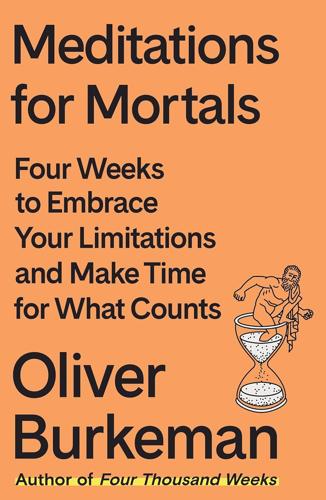
Meditations for Mortals: Four Weeks to Embrace Your Limitations and Make Time for What Counts
by
Oliver Burkeman
Published 8 Oct 2024
We all know there are plenty of people who might benefit from learning to defer gratification much more than they currently do. It’s just that if you’re the kind of person who vigorously agrees with that statement, it’s highly likely that you’d benefit from learning to defer it less. You’re probably familiar with the so-called ‘marshmallow experiments,’ in which the social psychologist Walter Mischel and his colleagues presented children with a single marshmallow and offered them a choice: they could eat it, or wait alone in the room with it for ten minutes, in which case they’d get one more. In footage of some versions of the experiment, the dutiful gratification-deferrers sing or talk to themselves out loud, in an effort to overrule their urge to eat the marshmallow in front of them.
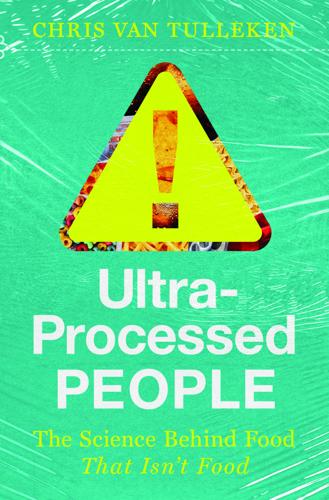
Ultra-Processed People: The Science Behind Food That Isn't Food
by
Chris van Tulleken
Published 26 Jun 2023
The difference in people’s weight has nothing to do with willpower. It’s simply a collision of genes and the constraints of the food environment. The most famous test of willpower showed exactly this. The original experiment, better known as the marshmallow experiment, was devised by Stanford’s Walter Mischel in the 1970s. It’s a simple enough idea: leave a child alone in a room with a marshmallow for fifteen minutes and tell them that, if they can resist eating it, you’ll come back with another one. The child has a choice: enjoy the treat now, or delay gratification for double the reward. Mischel followed ninety of the test participants for the next two decades, and found that those who had been able to delay gratification had lower BMIs and higher educational attainment.17, 18 But the study has since been repeated with a much larger number of subjects – 918 children from a range of backgrounds.19 And this new analysis seemed to show that the biggest predictor of whether a child could delay gratification was socioeconomic background: the children were more likely to take the instant reward if they came from disadvantaged households.
…
Rational snacking: young children’s decision-making on the marshmallow task is moderated by beliefs about environmental reliability. Cognition 2013; 126: 109–14. 25 Raver CC, Jones SM, Li-Grining C, et al. CSRP’s impact on low-income preschoolers’ preacademic skills: self-regulation as a mediating mechanism. Child Development 2011; 82: 362–78. 26 The Economist. Desire delayed: Walter Mischel on the test that became his life’s work. 2014. Available from: https://www.economist.com/books-and-arts/2014/10/11/desire-delayed. 27 Gill D. New study disavows marshmallow test’s predictive powers. 2021. https://anderson-review.ucla.edu/new-study-disavows-marshmallow-tests-predictive-powers/. 10.
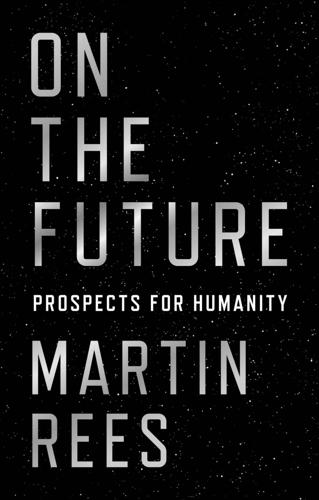
On the Future: Prospects for Humanity
by
Martin J. Rees
Published 14 Oct 2018
The pledges made at the 2015 Paris conference, with a commitment to renew and revise them every five years, are a positive step. But the issues that gained prominence during that conference will slip down the agenda again unless there’s continuing public concern—unless the issues still show up in politicians’ in-boxes and in the press. In the 1960s the Stanford University psychologist Walter Mischel did some classic experiments. He offered children a choice: one marshmallow immediately, or two if they waited for fifteen minutes. He claimed that the children who chose to delay their gratification became happier and more successful adults.17 This is an apt metaphor for the dilemma nations face today.
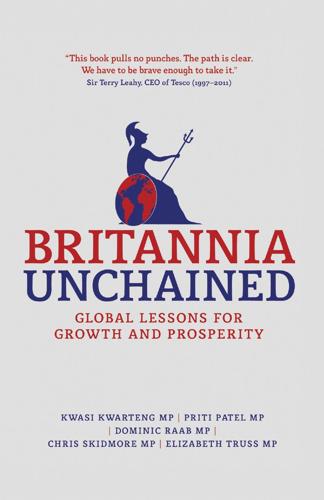
Britannia Unchained: Global Lessons for Growth and Prosperity
by
Kwasi Kwarteng
,
Priti Patel
,
Dominic Raab
,
Chris Skidmore
and
Elizabeth Truss
Published 12 Sep 2012
The marginal extra income from work is now so finely balanced with the cost of childcare that it is deterring many on lower and middling incomes from returning to work. Research for the insurance giant Aviva shows that, after tax, a woman in a relationship on the average part-time salary of £8,557 with children aged one and seven would lose £98 a month by going back to work. Delayed Gratification In 1972, psychologist Walter Mischel of Stanford University conducted a ‘marshmallow test’ with four- to six-year-olds at a nursery, and the results were followed up with further studies between 1988 and 2011. 72 Britannia Unchained The children were offered one marshmallow straight away, or two if they waited a while. Just one third could avoid the temptation, and waited long enough to get the second marshmallow.

Algorithms to Live By: The Computer Science of Human Decisions
by
Brian Christian
and
Tom Griffiths
Published 4 Apr 2016
Good predictions require good priors. This has a number of important implications. Our judgments betray our expectations, and our expectations betray our experience. What we project about the future reveals a lot—about the world we live in, and about our own past. What Our Predictions Tell Us About Ourselves When Walter Mischel ran his famous “marshmallow test” in the early 1970s, he was trying to understand how the ability to delay gratification develops with age. At a nursery school on the Stanford campus, a series of three-, four-, and five-year-olds had their willpower tested. Each child would be shown a delicious treat, such as a marshmallow, and told that the adult running the experiment was about to leave the room for a while.
…
The Average Rule suggests that after a painful wait, the thing to do is hang in there: the experimenter should be returning any minute now. But if you have no idea of the timescale of the disappearance—consistent with a power-law distribution—then it’s an uphill battle. The Multiplicative Rule then suggests that a protracted wait is just a small fraction of what’s to come. Decades after the original marshmallow experiments, Walter Mischel and his colleagues went back and looked at how the participants were faring in life. Astonishingly, they found that children who had waited for two treats grew into young adults who were more successful than the others, even measured by quantitative metrics like their SAT scores. If the marshmallow test is about willpower, this is a powerful testament to the impact that learning self-control can have on one’s life.

The Color of Money: Black Banks and the Racial Wealth Gap
by
Mehrsa Baradaran
Published 14 Sep 2017
It even affects their decision-making process.36 The famous “marshmallow experiment” revealed that children who could practice self-control and delay gratification (wait for the second marshmallow) were more successful as adults across the board.37 Yet the experiment has been misunderstood as it relates to poverty. One consistent result of the experiment, noted by its designer Walter Mischel and replicated by every subsequent experimenter, was that the poor consistently “failed” the marshmallow test. One might be tempted to believe that being poor was thus a result of a lack of self-control. However, as researchers like Melissa Sturge-Apple have homed in on the decisionmaking process, they have revealed a much more complex story.
…
Daniel Schneider, “Wealth and the Marital Divide,” American Journal of Sociology 117 (2011): 648-656; Michael Sherraden, ed., Inclusion in the American Dream: Assets, Poverty, and Public Policy (Oxford: Oxford University Press, 2005), 376; Oliver and Shapiro, Black Wealth/White Wealth, 126-127. 36. Jeanne Brooks-Gunn and Greg J. Duncan, “The Effects of Poverty on Children,” Future of Children 7 (Summer / Fall 1997): 55-71. 37. The experiment, designed by Stanford researcher Walter Mischel, presents children with the option of eating a marshmallow right away or waiting fifteen minutes to get two marshmallows. Mischel followed these children for decades and found that those who exhibited delayed gratification and waited for the two marshmallows were more successful than those who ate the one marshmallow right away.
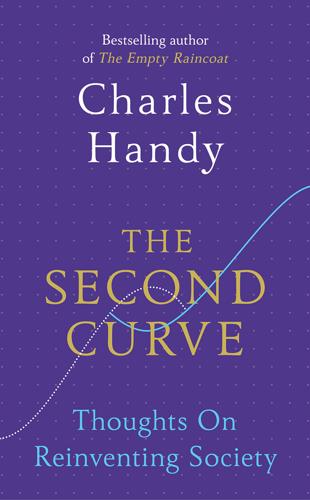
The Second Curve: Thoughts on Reinventing Society
by
Charles Handy
Published 12 Mar 2015
A world of instantaneous messaging and simultaneous multi-viewing, of data on demand but without analysis, can, if we are not careful, lead to a shallow and self-centred take on the world, a Twittering world where no one has the concentration or time to take in more than a paragraph. Living in the present is all very well, but if we fail the Marshmallow Test we will short-change our future. Walter Mischel, a leading expert on self-control, devised the Marshmallow Test almost 50 years ago. In an empty room he presented young children with a choice: take one marshmallow now or wait a while and have two. It was a test of deferred gratification. After observing the later lives of the children he was convinced that deferred gratification was crucial to a successful life, to better social functioning and to a greater sense of self-worth.
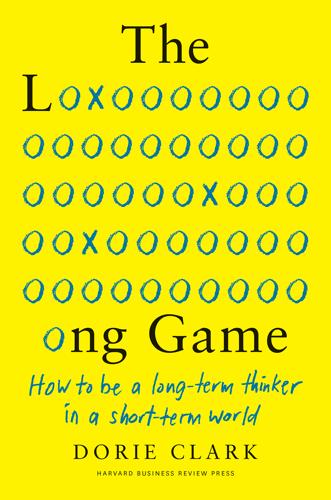
Long Game: How Long-Term Thinker Shorthb
by
Dorie Clark
Published 14 Oct 2021
Long-term thinking, and the actions that enable your eventual success, requires sacrifice—including, at times, the sacrifice of our dignity and pride. If you’re willing to endure the discomfort and humiliation, the rewards can be powerful. But most people aren’t. Of Marshmallows and Men You’ve probably heard of Walter Mischel’s famous “marshmallow study,” conducted at Stanford University’s Bing Nursery School in the 1960s. Children were given an option: have one delicious treat right now (marshmallows were an option), or wait fifteen minutes—alone in the room with the treat—and get two. The kicker came decades later, when the children’s study results were matched up against their life outcomes.

Die With Zero: Getting All You Can From Your Money and Your Life
by
Bill Perkins
Published 27 Jul 2020
If this concept of a personal interest rate works for you, though, then keeping it in mind when you are considering buying an experience can help you decide whether it’s worth it to spend the money now or to save it for another time. Would You Rather? If the personal interest rate doesn’t do it for you, you can think in terms of simple multiples of an experience. This is how the famous marshmallow test, created for preschoolers by psychologist Walter Mischel at Stanford in the 1960s, is set up: Would you rather have one marshmallow now, or two marshmallows 15 minutes from now? Many three-year-olds might say they’d rather have two marshmallows in 15 minutes, but once that tempting marshmallow is in front of them, many can’t wait. Adults usually have a better ability to delay gratification—very often to the point where delaying gratification no longer serves them well.
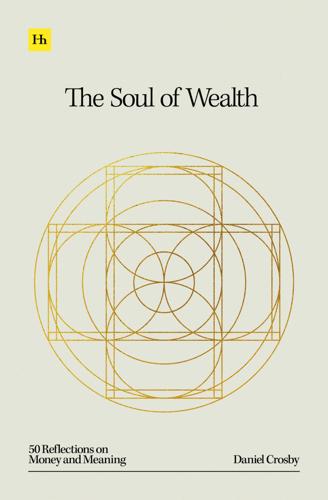
The Soul of Wealth
by
Daniel Crosby
Published 19 Sep 2024
But no study has entered the public consciousness as much as the Marshmallow Experiment. This coup de grâce example underscoring the benefits of delayed gratification has undoubtedly been told at countless financial advisor meeting rooms over the years. Here’s how it played out. Psychologist and Stanford Professor Walter Mischel aimed to understand when self-control developed in children. The experiments, which began in the 1960s, involved offering a child one small immediate reward, or two small rewards if they waited 15 minutes. If the child did not succumb to temptation by gobbling up the single marshmallow, then they were rewarded with either a second marshmallow or a pretzel.

Adaptive Markets: Financial Evolution at the Speed of Thought
by
Andrew W. Lo
Published 3 Apr 2017
Six years later, in August 2009, Ralston married Jessica Trusty, and their first child, Leo, was born in 2010. Psychologists have examined the ability of the human brain to defer to the short-term bad in favor of the long-term good, albeit in a much less dramatic fashion than Ralston’s ordeal. Beginning in the late 1960s, the American psychologist Walter Mischel conducted a series of experiments with more than six hundred preschoolers at Stanford University.26 Each toddler was presented a tray of marshmallows and other treats. The child was then given a choice: have a treat immediately, or wait a few minutes while Mischel left the room and when he returned, the child could have two treats.
…
Carlsson, Arvid, Margit Lindqvist, and Tor Magnusson. 1957. “3,4-Dihydroxyphenylalanine and 5-Hydroxytryptophan As Reserpine Antagonists.” Nature 180: 1200. Casey, B. J., Leah H. Somerville, Ian H. Gotlib, Ozlem Ayduk, Nicholas T. Franklin, Mary K. Askren, John Jonides, Marc G. Berman, Nicole L. Wilson, Theresa Teslovich, Gary Glover, Vivian Zayas, Walter Mischel, and Yuichi Shoda. 2011. “Behavioral and neural correlates of delay of gratification 40 years later.” Proceedings of the National Academy of Sciences 108: 14998–15003. Caspi, Avshalom, Karen Sugden, Terrie E. Moffitt, Alan Taylor, Ian W. Craig, HonaLee Harrington, Joseph McClay, Jonathan Mill, Judy Martin, Antony Braithwaite, and Richie Poulton. 2003.

The Price of Time: The Real Story of Interest
by
Edward Chancellor
Published 15 Aug 2022
Time preference explains why Aristotle was wrong. Interest is the difference in monetary values across time, the rate at which present consumption is exchanged for future consumption. Interest represents the time value of money. Modern behavioural research supports Turgot’s intuition. In the late 1960s, Walter Mischel, a psychologist at Stanford University, made a famous study of deferred gratification. Under controlled conditions, children were offered a choice between consuming a single treat immediately or waiting a quarter of an hour to receive double the reward. Originally titled ‘The Preschool Self-Imposed Delay of Immediate Gratification for the Sake of Delayed but More Valued Rewards Paradigm’, Mischel’s study is popularly known, after the particular reward on offer, as ‘The Marshmallow Test’.55 Of the six hundred children who took the original test, a third of the children deferred gratification long enough to receive their extra marshmallow.
…
From A. R. J. Turgot, ‘Reflections on the Formation and The Distribution of Riches’ (1770), in The Turgot Collection: Writings, Speeches, and Letters of Anne Robert Jacques Turgot, Baron de Laune, ed. David Gordon (Auburn, Ala., 2011), p. 63. 54. Le Goff, Your Money or Your Life, p. 93. 55. Walter Mischel, The Marshmallow Test: Understanding Self-Control and How to Master It (London, 2014), p. 17. 56. Ibid., pp. 44–5. 57. Ludwig von Mises, ‘Human Action: The Rate of Interest’, in The Pure Time-Preference Theory of Interest, ed. Jeffrey Herbener (Auburn, Ala., 2011), p. 67. 58. Irving Fisher, The Theory of Interest: As Determined by Impatience to Spend Income and Opportunity to Invest It [1930], from The Works of Irving Fisher, vol.
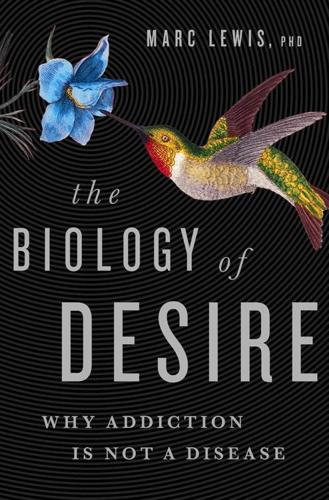
The Biology of Desire: Why Addiction Is Not a Disease
by
Marc Lewis Phd
Published 13 Jul 2015
The chapter about Alice highlighted ego fatigue, the breakdown of cognitive control when people try to suppress their feelings or block their impulses for some length of time. Both of these psychological vulnerabilities are natural, both are shared with other animals, and both correspond with specific neural events. Now appeal was famously depicted by Walter Mischel’s marshmallow test: three-to-four-year-old children were told they could eat one marshmallow as soon as the examiner left the room, but if they waited a few minutes until she returned, they would have two to eat. Three-year-olds most often gobbled the first marshmallow in no time, thereby losing the opportunity for a second.
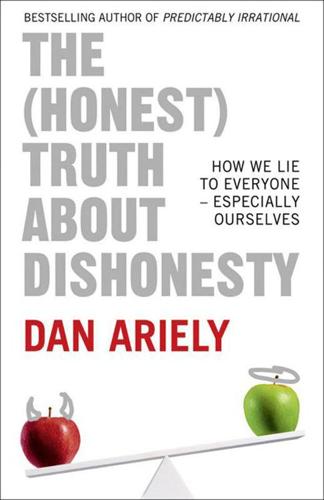
The (Honest) Truth About Dishonesty: How We Lie to Everyone, Especially Ourselves
by
Dan Ariely
Published 27 Jun 2012
Mead, and Dan Ariely, “Unable to Resist Temptation: How Self-Control Depletion Promotes Unethical Behavior,” Organizational Behavior and Human Decision Processes (2011). C. Peter Herman and Janet Polivy, “A Boundary Model for the Regulation of Eating,” Research Publications—Association for Research in Nervous and Mental Disease (1984). Walter Mischel and Ozlem Ayduk, “Willpower in a Cognitive-Affective Processing System: The Dynamics of Delay of Gratification,” in Handbook of Self-regulation: Research, Theory, and Applications, edited by Kathleen D. Vohs and Roy F. Baumeister (New York: Guilford, 2011). Janet Polivy and C. Peter Herman, “Dieting and Binging, A Causal Analysis,” American Psychologist (1985).
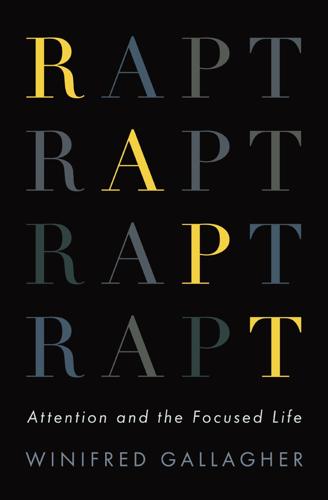
Rapt: Attention and the Focused Life
by
Winifred Gallagher
Published 9 Mar 2009
His military colleagues devised many for the elaborate personality tests they gave to soldiers, yet these extensive queries failed to meet the objective of identifying who would do well or poorly in battle. Looking to the opposite extreme, Kahneman discovered the work of the Columbia University psychologist Walter Mischel, who gained a lot of very useful information about a child’s nature with just one brilliantly conceived question: Do you want this small lollipop right now or this big one tomorrow? When asked if he had ever come up with such a simple, focused question for assessing personality, Kahneman nods: “How many kids would you like to have in your tent when you’re camping?”
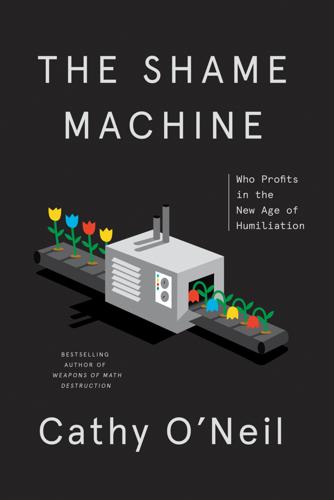
The Shame Machine: Who Profits in the New Age of Humiliation
by
Cathy O'Neil
Published 15 Mar 2022
But the people in charge mean well, don’t they? Many of them do. But they’re operating within ecosystems ruled by shame—and propped up by pseudoscientific research. One such study, which masterfully shifts blame onto the poor in the name of objectivity, is known as the marshmallow experiment. Administered by Walter Mischel, a psychologist at Stanford in the 1960s, it attempted to gauge young children’s capacity to master self-control. Mischel and his colleagues launched the experiment at a Stanford nursery school. Each child was given a marshmallow and told that they could eat it immediately. However, if they managed to resist the temptation and leave it intact, they would be awarded a second marshmallow later.

The Journey of Humanity: The Origins of Wealth and Inequality
by
Oded Galor
Published 22 Mar 2022
Shimelmitz, Ron, Iris Groman-Yaroslavski, Mina Weinstein-Evron and Danny Rosenberg, ‘A Middle Pleistocene abrading tool from Tabun Cave, Israel: A search for the roots of abrading technology in human evolution’, Journal of Human Evolution 150 (2020): 102909. Shiue, Carol H., ‘Human Capital and Fertility in Chinese Clans Before Modern Growth’, Journal of Economic Growth 22, no. 4 (2017): 351–96. Shoda, Yuichi, Walter Mischel and Philip K. Peake, ‘Predicting Adolescent Cognitive and Self-Regulatory Competencies from Preschool Delay of Gratification: Identifying Diagnostic Conditions’, Developmental Psychology 26, no. 6 (1990): 978. Simon, Julian Lincoln, The Economics of Population Growth, Princeton University Press, 1977.
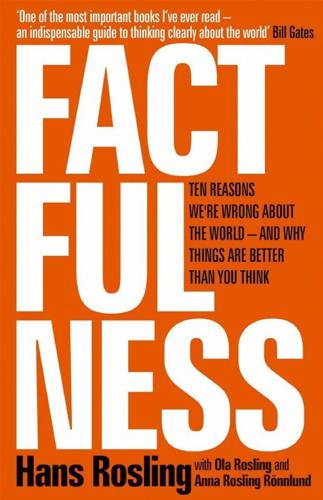
Factfulness: Ten Reasons We're Wrong About the World – and Why Things Are Better Than You Think
by
Hans Rosling
,
Ola Rosling
and
Anna Rosling Rönnlund
Published 2 Apr 2018
Some of the books that completely changed our thinking about the mind and about how we should teach facts about the world are: Dan Ariely, Predictably Irrational (2008), The Upside of Irrationality (2010), and The Honest Truth About Dishonesty (2012); Steven Pinker, How the Mind Works (1997), The Stuff of Thought (2007), The Blank Slate (2002), and The Better Angels of Our Nature (2011); Carol Tavris and Elliot Aronson, Mistakes Were Made (But Not by Me) (2007); Daniel Kahneman, Thinking, Fast and Slow (2011); Walter Mischel, The Marshmallow Test (2014); Philip E. Tetlock and Dan Gardner, Superforecasting (2015); Jonathan Gottschall, The Storytelling Animal (2012); Jonathan Haidt, The Happiness Hypothesis (2006) and The Righteous Mind (2012); and Thomas Gilovich, How We Know What Isn’t So (1991). Chapter One: The Gap Instinct Child mortality.
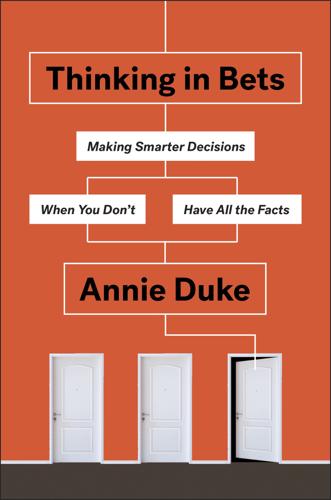
Thinking in Bets
by
Annie Duke
Published 6 Feb 2018
One way to do this is to take advantage of mental time-travel strategies. * From four-year-olds to adults, temporal discounting is a universal issue. The most famous experiment about the difficulty (and importance) of being patient, known as the Marshmallow Test, was performed by professor Walter Mischel and colleagues at Stanford starting in the early 1960s. At Stanford’s Bing Nursery School, they offered children a choice between a smaller reward (like one marshmallow) that they could have immediately, or a larger reward (like two marshmallows) if they were willing to wait, alone, for up to twenty minutes.
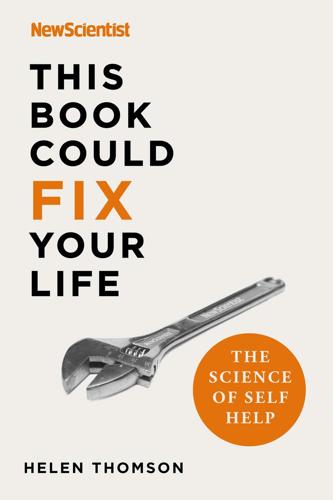
This Book Could Fix Your Life: The Science of Self Help
by
New Scientist
and
Helen Thomson
Published 7 Jan 2021
Harnessing willpower – our self-control and determination to do something, perhaps against the odds or what we feel to be our immediate self-interest – doesn’t just help you to stop your own cravings but has also been linked to many aspects of success in life. The classic experiment that all willpower research has grown from was the work of psychologist Walter Mischel. In the 1960s, Mischel presented children with a tray of tasty treats, including marshmallows. The kids could either eat one treat immediately, or wait for a few minutes while the researcher left the room to run an errand and then have two. Years later, the children who ‘delayed their gratification’ scored better on SAT college entrance exams, were less likely to smoke, take drugs or become obese and were less physically aggressive.

You Are Not So Smart
by
David McRaney
Published 20 Sep 2011
Procrastination is such a pervasive element of the human experience there are more than 600 books for sale promising to snap you out of your bad habits, and this year alone 120 new books on the topic were published. Obviously this is a problem everyone admits to, so why is it so hard to defeat? To explain, consider the power of marshmallows. Walter Mischel conducted experiments at Stanford University throughout the late 1960s and early 1970s in which he and his researchers offered a bargain to children. The kids sat at a table in front of a bell and some treats. They could pick a pretzel, a cookie, or a giant marshmallow. They told the little boys and girls they could either eat the treat right away or wait a few minutes.
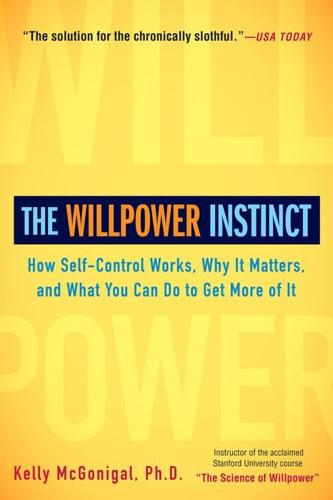
The Willpower Instinct: How Self-Control Works, Why It Matters, and What You Can Doto Get More of It
by
Kelly McGonigal
Published 1 Dec 2011
How big your discount rate is turns out to be a major determinant of your long-term health and success. The first study to look at the long-term consequences of a person’s discount rate was a classic psychology experiment best known as “The Marshmallow Test.” In the late 1960s, Stanford psychologist Walter Mischel gave a bunch of four-year-olds the choice between one treat now or two treats in fifteen minutes. After explaining the choice, the experimenter left the child alone in a room with both treats and a bell. If the child could wait until the experimenter returned, he could have both treats. But if the child couldn’t wait, he could ring the bell at any time and eat one treat immediately.
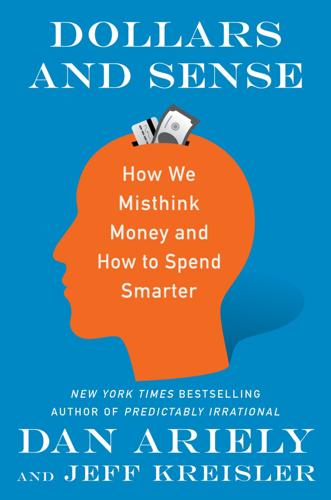
Dollars and Sense: How We Misthink Money and How to Spend Smarter
by
Dr. Dan Ariely
and
Jeff Kreisler
Published 7 Nov 2017
It’s because we tend to value certain things right now in the present much more highly than we value them in the future. Something that’s great for us—but won’t arrive for days, weeks, months, or years—isn’t as valuable to us as something that’s only okay for us but is available right now. The future simply doesn’t tempt us as much as the present does. In his famous marshmallow test, Walter Mischel left four- and five-year-old children alone, each with a single marshmallow. He told each child that if they did not touch the marshmallow for a short time, someone would bring them a second marshmallow—but only if they didn’t touch the first one now. Most kids gobbled up their marshmallow right away, and never got to enjoy the second one.

The Narcissist Next Door
by
Jeffrey Kluger
Published 25 Aug 2014
They are moved equally by the fact that they want the cookie they’ve got their eye on and the belief they have a right to the cookie—are owed the cookie—and woe betide the person who tries to deny it to them. And as for asking babies to police themselves—to keep their hands off the plate of snacks or their playmate’s belongings? Not a chance. The heart wants what it wants. It was in the 1960s that Stanford University psychologist Walter Mischel first conducted his landmark study in impulse control that became simply and universally known as “the marshmallow test.” Working with a sample group of four-year-olds, he offered each of the kids a deal: They could have one marshmallow right away or, if they waited fifteen minutes while he stepped out to run an errand, they could have two upon his return.

The Impulse Society: America in the Age of Instant Gratification
by
Paul Roberts
Published 1 Sep 2014
Likewise doomed, it seems, are efforts to revive a puritanical “shame culture” as a means to encourage self-restraint. (Witness the inability to kill off the politically and environmentally incorrect sport-utility vehicle.) Subtler efforts, drawing on behavioral science to help us compensate for our obsolete neural wiring, show some promise. Walter Mischel, the researcher behind the famous “marshmallow study” from the 1970s, has developed effective strategies to train impatient children to be patient—an important success, given that impatient children have a high likelihood of growing up to be impatient adults.14 There are other potentially fruitful ventures, such as what Richard Thaler (of the two-self model) and coauthor Cass Sunstein call “choice architecture.”
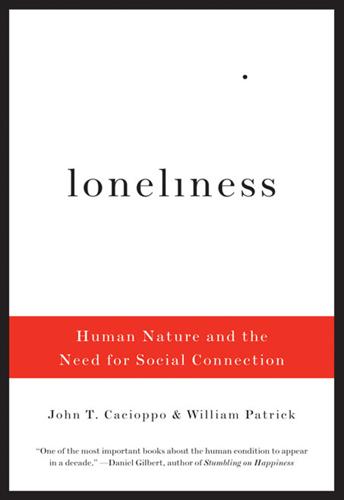
Loneliness: Human Nature and the Need for Social Connection
by
John T. Cacioppo
Published 9 Aug 2009
We make meaning of such events—beautiful diversity, cheap labor, the end of the world as we know it—depending on many other factors in our lives and attitudes. And just as each of us represents the idiosyncratic within the universal, nothing says that your or my “idiosyncratic” is always going to be the same throughout our lifetime. Over the past four decades, research by the psychologist Walter Mischel has demonstrated that, contrary to the idea of genetic determinism, people do not behave according to rigidly fixed traits that manifest themselves consistently across all situations.6 It is not that there is no consistency, but that the consistency is situational and temporal. You may feel lonely every time you enter into a certain situation (the lunchroom in high school), even if, at the same period in your life, you feel socially satisfied very consistently in another context (band camp).
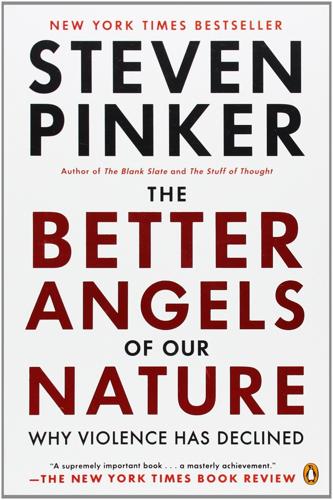
The Better Angels of Our Nature: Why Violence Has Declined
by
Steven Pinker
Published 24 Sep 2012
That jibes with a psychological theory that myopic discounting arises from a handoff between two systems inside the skull, one for rewards that are imminent, another for rewards that are far in the future or entirely hypothetical.81 As Thomas Schelling put it, “People behave sometimes as if they had two selves, one who wants clean lungs and long life and another who adores tobacco, or one who wants a lean body and another who wants dessert, or one who yearns to improve himself by reading Adam Smith on self-command . . . and another who would rather watch an old movie on television.” 82 Freud’s theory of the id and the ego, and the older idea that our lapses are the handiwork of inner demons (“The devil made me do it!”) are other expressions of the intuition that self-control is a battle of homunculi in the head. The psychologist Walter Mischel, who conducted classic studies of myopic discounting in children (the kids are given the agonizing choice between one marshmallow now and two marshmallows in fifteen minutes), proposed, with the psychologist Janet Metcalfe, that the desire for instant gratification comes from a “hot system” in the brain, whereas the patience to wait comes from a “cool system.” 83 In previous sections we have caught glimpses of what the hot and cool systems might be: the limbic system (whose major parts are exposed in figure 8–2) and the frontal lobes (seen in figure 8–3).
…
We may surmise that in the brains of impulsive assailants, aggressive impulses from the limbic system are stronger, and the self-control exerted by the frontal lobes is weaker. Most people, of course, are not so lacking in self-control that they ever lash out in violence. But among the nonviolent majority some people have more self-control than others. Aside from intelligence, no other trait augurs as well for a healthy and successful life.92 Walter Mischel began his studies of delay of gratification (in which he gave children the choice between one marshmallow now and two marshmallows later) in the late 1960s, and he followed the children as they grew up.93 When they were tested a decade later, the ones who had shown greater willpower in the marshmallow test had now turned into adolescents who were better adjusted, attained higher SAT scores, and stayed in school longer.
…
Another tactic is to keep oneself away from trouble, such as avoiding the place where an aggrieved rival is known to hang out. Brawlers who allow themselves to be pulled apart by bystanders avail themselves of a similar tactic, with the added bonus that they have not conceded weakness or cowardice by disengaging. Other strategies of self-control are mental rather than physical. Walter Mischel showed that even four-year-olds can wait out a long interval for a double helping of marshmallows if they cover the alluring marshmallow in front of them, look away from it, distract themselves by singing, or even reframe it in their minds as a puffy white cloud rather than a sweet tasty food.119 An equivalent in the case of violence may be the cognitive reframing of an insult from a devastating blow to one’s reputation to an ineffectual gesture or a reflection on the immaturity of the insulter.

This Will Make You Smarter: 150 New Scientific Concepts to Improve Your Thinking
by
John Brockman
Published 14 Feb 2012
It is inexorably revisionary, learning from its mistakes, erasing and rewriting even its most sacred texts, until the puzzle is complete. Control Your Spotlight Jonah Lehrer Contributing editor, Wired magazine; author, How We Decide In the late 1960s, the psychologist Walter Mischel began a simple experiment with four-year-old children. He invited the kids into a tiny room containing a desk and a chair and asked them to pick a treat from a tray of marshmallows, cookies, and pretzel sticks. Mischel then made the four-year-olds an offer: They could either eat one treat right away or, if they were willing to wait while he stepped out for a few minutes, they could have two treats when he returned.
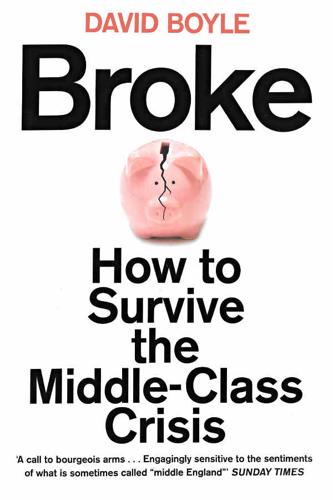
Broke: How to Survive the Middle Class Crisis
by
David Boyle
Published 15 Jan 2014
The middle classes are like elephants: you know one when you see one. The key question is whether there is anything any more which holds these disparate identities together. Patrick Hutber’s thrift may have disappeared. Even the sense of deferred gratification which used to define the middle classes is not quite as secure as it was. The famous experiment by Walter Mischel in the 1960s offered four-year-olds one marshmallow now or two in twenty minutes and found that those who waited went on to enormously outperform the others in the US scholastic aptitude tests. For a moment this seemed to be a justification for all those middle-class efforts at saving for education, a way to glimpse the essence of middle-class life actually there under the microscope.

The Confidence Game: The Psychology of the Con and Why We Fall for It Every Time
by
Maria Konnikova
Published 28 Jan 2016
I’ve been lucky to have a number of incredible mentors, but I want to thank especially Katherine Vaz, who believed in me from the moment I stepped into her writing class as a confused eighteen-year-old; Steven Pinker, who has taught me so much of what I know and has been a constant source of inspiration; and Walter Mischel, for hours of wisdom, beautiful art, and always thought-provoking conversation. And a final, most heartfelt thank-you to the people who’ve had to put up with me the longest, and somehow still decided to stick around. The friends who listened to me moan over countless meals and bottles of wine—and despite my often less-than-stellar company still offered in-person deliveries of tea when I shut myself in for weeks at a time.
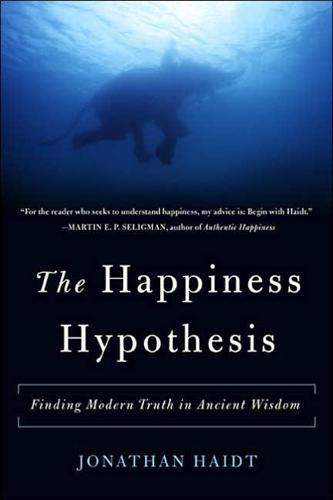
The Happiness Hypothesis: Finding Modern Truth in Ancient Wisdom
by
Jonathan Haidt
Published 26 Dec 2005
But they don't always work together well. Here are three quirks of daily life that illustrate the sometimes complex relationship between the rider and the elephant. F A I L U R E S O F S E L F C O N T R O L Imagine that it is 1970 and you are a four-year-old child in an experiment being conducted by Walter Mischel at Stanford University. \ o u are brought into a room at your preschool where a nice man gives you toys and plays with you for a while. Then the man asks you, first, whether you like marshmallows (you do), and, then, whether you'd rather have this plate here with one marshmallow or that plate there with two marshmallows (that o n e , of course).
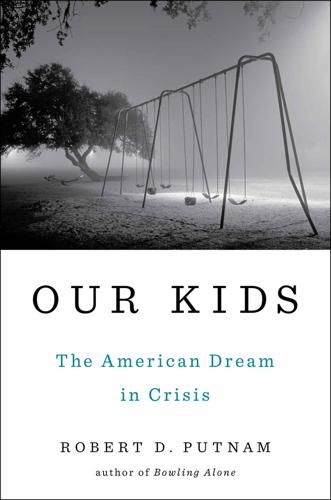
Our Kids: The American Dream in Crisis
by
Robert D. Putnam
Published 10 Mar 2015
Newman, “Long-term Prediction of Achievement and Attitudes in Mathematics and Reading,” Child Development 57 (June 1986): 646–59; Grover J. Whitehurst and Christopher J. Lonigan, “Child Development and Emergent Literacy,” Child Development 69 (June 1998): 848–72. 21. Tough, How Children Succeed; Walter Mischel, Yuichi Shoda, and Monica Larrea Rodriguez, “Delay of Gratification in Children,” Science 244 (May 26, 1989): 933–38; Angela L. Duckworth and Martin E. P. Seligman, “Self-Discipline Outdoes IQ in Predicting Academic Performance of Adolescents,” Psychological Science 16 (December 2005): 939–44; James J.

Rationality: What It Is, Why It Seems Scarce, Why It Matters
by
Steven Pinker
Published 14 Oct 2021
But our cooler head may realize that it’s better to put a lid on it, to achieve things that make us feel even greater in the long run, like a good reputation and a trusting relationship. Conflicts among Time Frames Since not everything happens at once, conflicts between goals often involve goals that are realized at different times. And these in turn often feel like conflicts between different selves, a present self and a future self.14 The psychologist Walter Mischel captured the conflict in an agonizing choice he gave four-year-olds in a famous 1972 experiment: one marshmallow now or two marshmallows in fifteen minutes.15 Life is a never-ending gantlet of marshmallow tests, dilemmas that force us to choose between a sooner small reward and a later large reward.

The Personal MBA: A World-Class Business Education in a Single Volume
by
Josh Kaufman
Published 2 Feb 2011
Inhibiting certain decisions or responses can be beneficial, but our ability to inhibit has limitations, which we’ll discuss next. SHARE THIS CONCEPT: http://book.personalmba.com/inhibition/ Willpower Depletion If you don’t want to slip, don’t go where it’s slippery. —ALCOHOLICS ANONYMOUS MAXIM In the 1960s, Dr. Walter Mischel, a researcher at Columbia University, systematically tortured small children. Here’s how he did it: Dr. Mischel placed the child in a small room with a table and a chair. In the middle of the table, Dr. Mischel would place a big, fluffy marshmallow, then tell the child, “If you wait until I come back, you can have two.”

The Gifted Adult: A Revolutionary Guide for Liberating Everyday Genius(tm)
by
Mary-Elaine Jacobsen
Published 2 Nov 1999
Only when we understand how we become victims of our own enthusiasm can we come to grips with the fact that our energy reserves are not bottomless. We must admit that our legendary verve can leave us burned out, and that scurrying about can detour us from realizing our most important dreams. An effective measuring tool for examining reactivity is the “marshmallow test,” devised by Walter Mischel. In Emotional Intelligence, Daniel Goleman employs Mischel’s test as a method of measuring the essence of emotional self-regulation: the ability to deny impulse in the service of a goal, whether building a business or pursuing the Stanley Cup. Goleman explains the need for goal-directed self-imposed delay of gratification this way: Just imagine you’re four years old, and someone makes the following proposal: If you’ll wait until after he runs an errand, you can have two marshmallows for a treat.

The Gifted Adult: A Revolutionary Guide for Liberating Everyday Genius(tm)
by
Mary-Elaine Jacobsen
Published 18 Feb 2015
Only when we understand how we become victims of our own enthusiasm can we come to grips with the fact that our energy reserves are not bottomless. We must admit that our legendary verve can leave us burned out, and that scurrying about can detour us from realizing our most important dreams. An effective measuring tool for examining reactivity is the “marshmallow test,” devised by Walter Mischel. In Emotional Intelligence, Daniel Goleman employs Mischel’s test as a method of measuring the essence of emotional self-regulation: the ability to deny impulse in the service of a goal, whether building a business or pursuing the Stanley Cup. Goleman explains the need for goal-directed self-imposed delay of gratification this way: Just imagine you’re four years old, and someone makes the following proposal: If you’ll wait until after he runs an errand, you can have two marshmallows for a treat.

Like, Comment, Subscribe: Inside YouTube's Chaotic Rise to World Domination
by
Mark Bergen
Published 5 Sep 2022
The Wojcickis had three girls in rapid succession and raised them to be industrious, clipping coupons and balancing checkbooks before they could drive. When Susan was four, she rushed up to her mother in the parking lot of her Stanford preschool. “We had marshmallows today,” the child said, “and I got two.” Esther Wojcicki soon learned her eldest was a participant in a psychology experiment. Walter Mischel, a Stanford professor, placed children in a room with a treat, telling them to eat it now or wait fifteen minutes for seconds. Forty years later kids who waited were physically fitter, “more cognitively and socially competitive adolescents,” and less troubled adults, so concluded the fabled study.

Physics of the Future: How Science Will Shape Human Destiny and Our Daily Lives by the Year 2100
by
Michio Kaku
Published 15 Mar 2011
Then one asks the question: What is the one quality that predicted their success in marriage, careers, wealth, etc.? When one compensates for socioeconomic factors, one finds that one characteristic sometimes stands out from all the others: the ability to delay gratification. According to the long-term studies of Walter Mischel of Columbia University, and many others, children who were able to refrain from immediate gratification (e.g., eating a marshmallow given to them) and held out for greater long-term rewards (getting two marshmallows instead of one) consistently scored higher on almost every measure of future success, in SATs, life, love, and career.

SuperBetter: The Power of Living Gamefully
by
Jane McGonigal
Published 14 Sep 2015
Kentaro Fujita et al., “Construal Levels and Self-Control,” Journal of Personality and Social Psychology 90, no. 3 (2006): 351; Hedy Kober et al., “Prefrontal-Striatal Pathway Underlies Cognitive Regulation of Craving,” Proceedings of the National Academy of Sciences 107, no. 33 (2010): 14811–16; and Walter Mischel and Monica L. Rodriguez, “Psychological Distance in Self-Imposed Delay of Gratification,” in Rodney R. Cocking and K. Ann Renninger, eds., The Development and Meaning of Psychological Distance (Hillsdale, NJ: Lawrence Erlbaum Associates, 1993). 10. Kross and Ayduk, “Making Meaning.” 11. Kross et al., “Self-Talk as a Regulatory Mechanism.” 12.
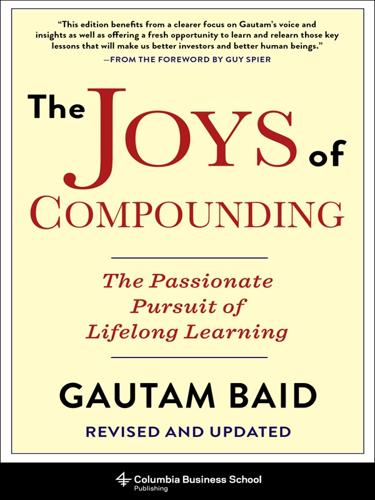
The Joys of Compounding: The Passionate Pursuit of Lifelong Learning, Revised and Updated
by
Gautam Baid
Published 1 Jun 2020
—Charlie Munger People who arbitrage time will almost always outperform. The first order thought of instant gratification is a crowded path, ensuring mediocre results at best. Delayed gratification, which requires second order thinking, is less crowded and more likely to get results. —Shane Parrish In the 1960s, Walter Mischel, an American psychologist specializing in personality theory and social psychology, conducted a famous experiment at Stanford University’s nursery school. In the experiment, now widely known as the Stanford marshmallow experiment, four- and five-year-olds were presented with a difficult choice.

The Irrational Bundle
by
Dan Ariely
Published 3 Apr 2013
Mead, and Dan Ariely, “Unable to Resist Temptation: How Self-Control Depletion Promotes Unethical Behavior,” Organizational Behavior and Human Decision Processes (2011). C. Peter Herman and Janet Polivy, “A Boundary Model for the Regulation of Eating,” Research Publications—Association for Research in Nervous and Mental Disease (1984). Walter Mischel and Ozlem Ayduk, “Willpower in a Cognitive-Affective Processing System: The Dynamics of Delay of Gratification,” in Handbook of Self-regulation: Research, Theory, and Applications, edited by Kathleen D. Vohs and Roy F. Baumeister (New York: Guilford, 2011). Janet Polivy and C. Peter Herman, “Dieting and Binging, A Causal Analysis,” American Psychologist (1985).

Behave: The Biology of Humans at Our Best and Worst
by
Robert M. Sapolsky
Published 1 May 2017
Marshmallows The frontal cortex and its increasing connectivity with the rest of the brain anchors the neurobiology of kids’ growing sophistication, most importantly in their capacity to regulate emotions and behavior. The most iconic demonstration of this revolves around an unlikely object—the marshmallow.20 In the 1960s Stanford psychologist Walter Mischel developed the “marshmallow test” to study gratification postponement. A child is presented with a marshmallow. The experimenter says, “I’m going out of the room for a while. You can eat the marshmallow after I leave. But if you wait and don’t eat it until I get back, I’ll give you another marshmallow,” and leaves.